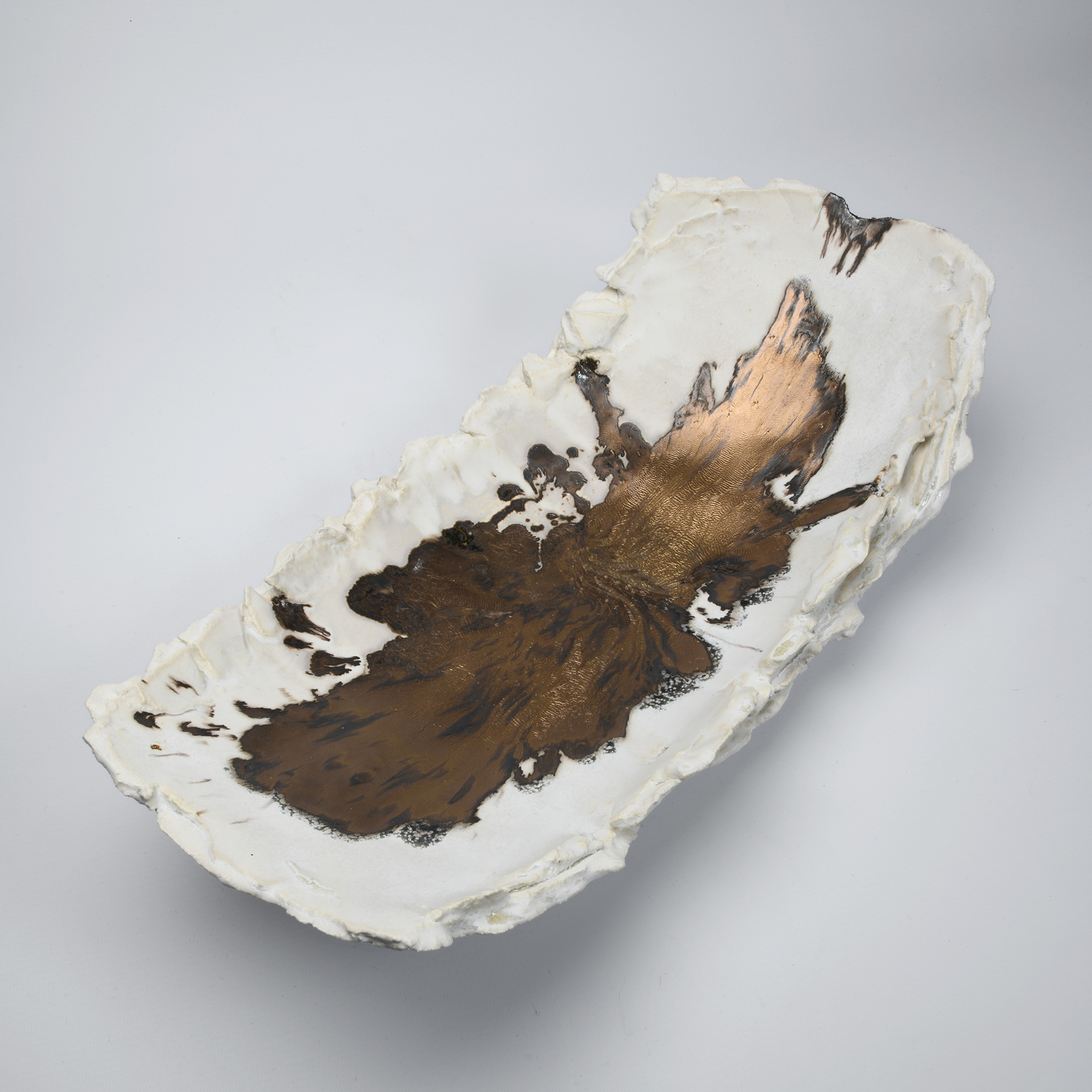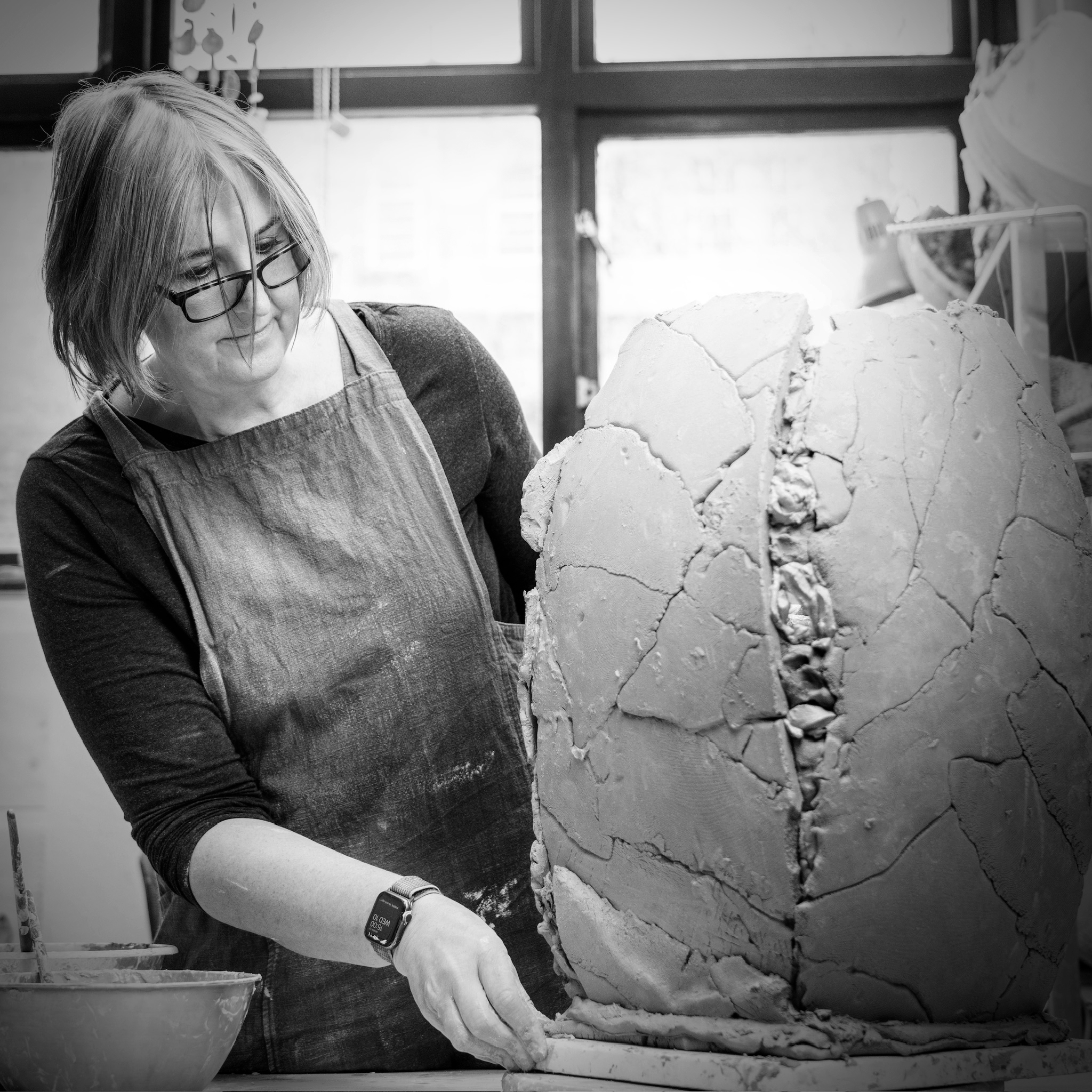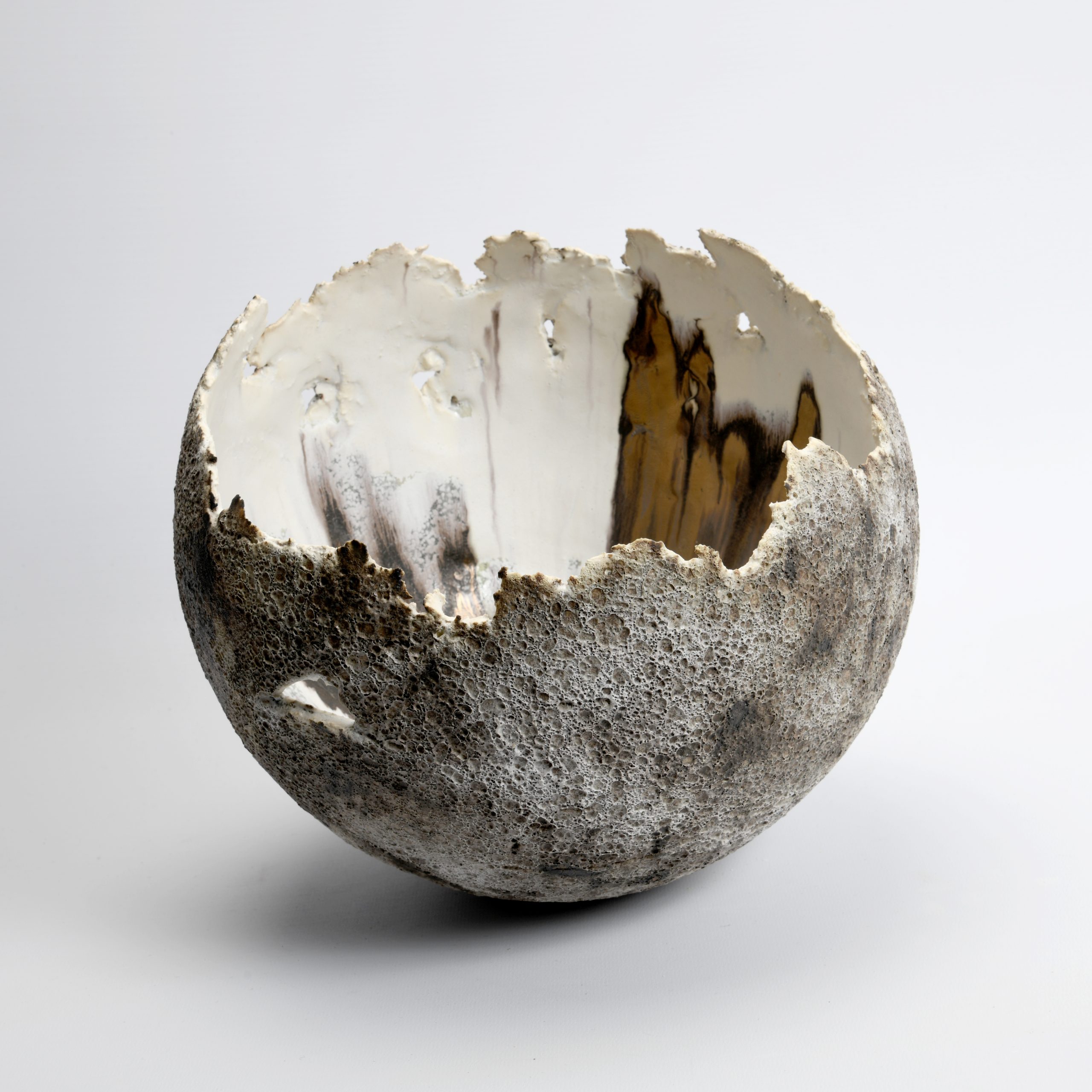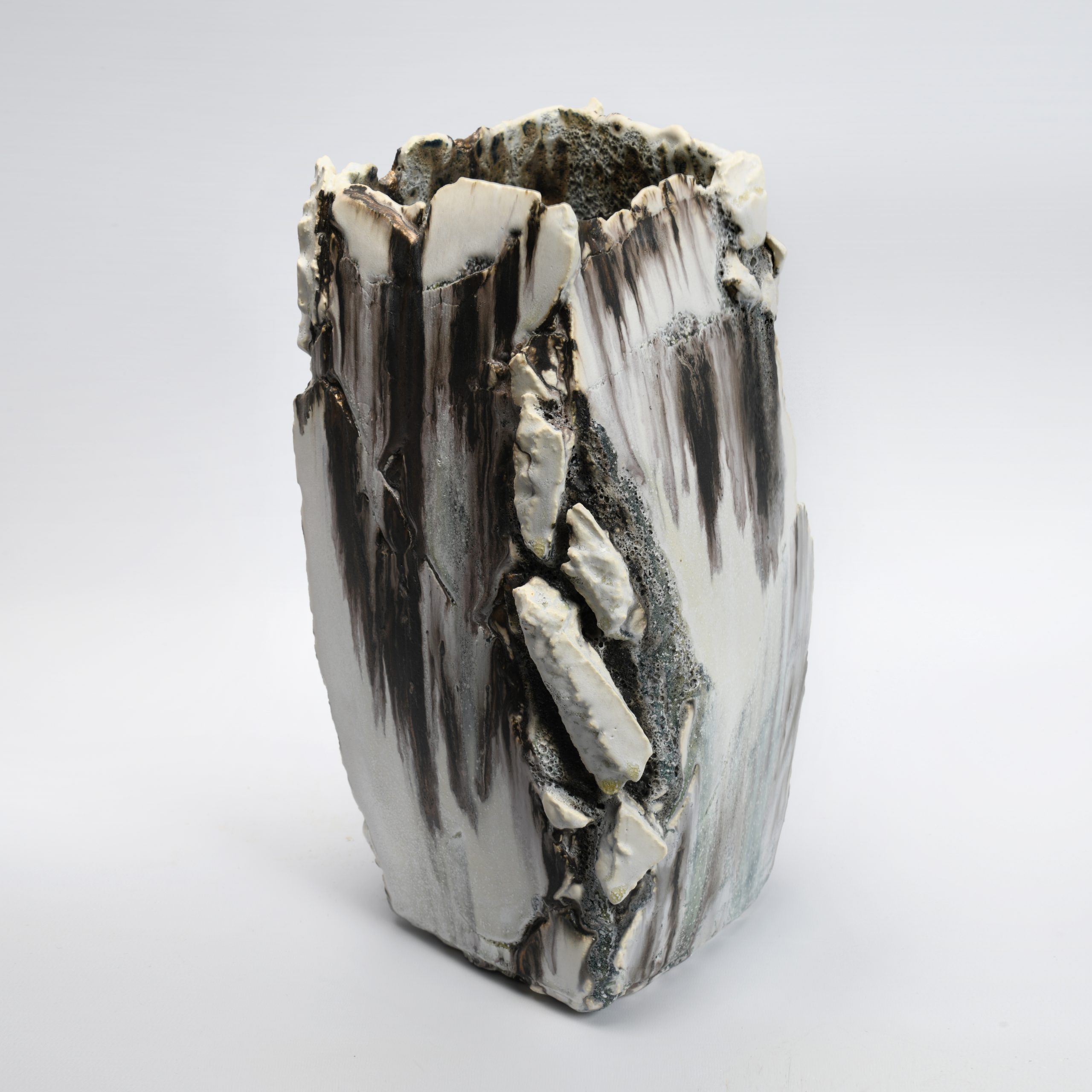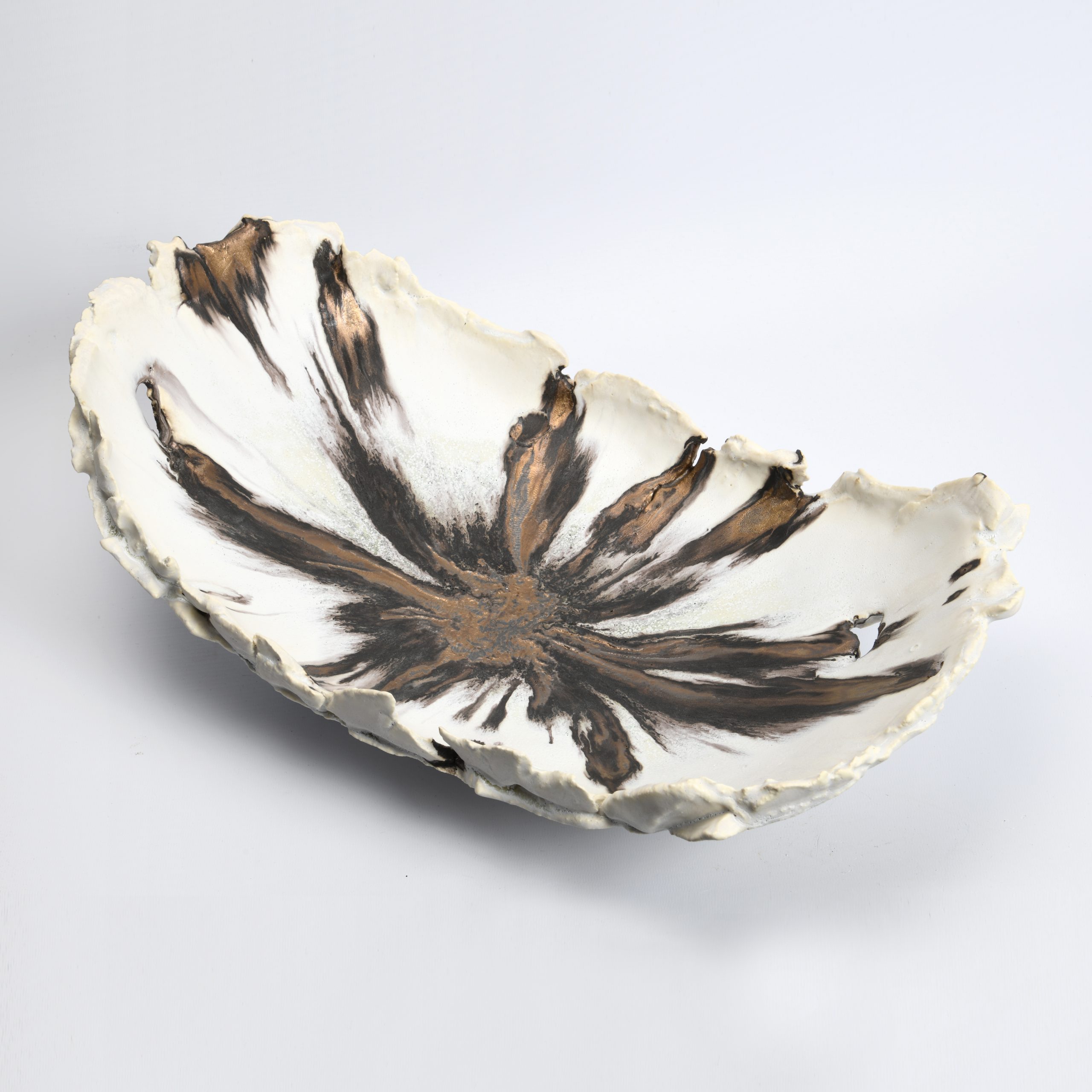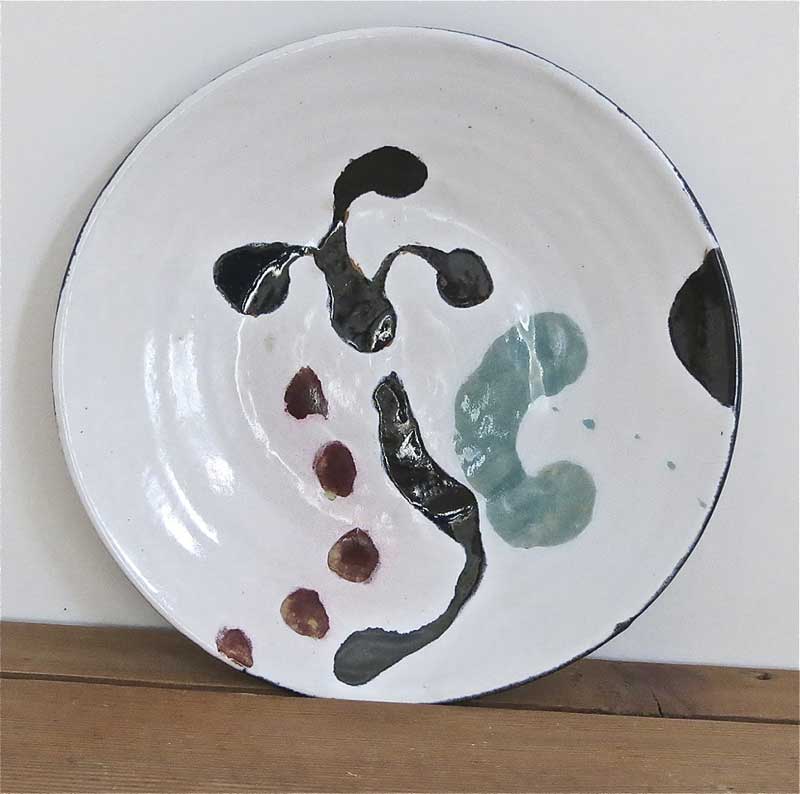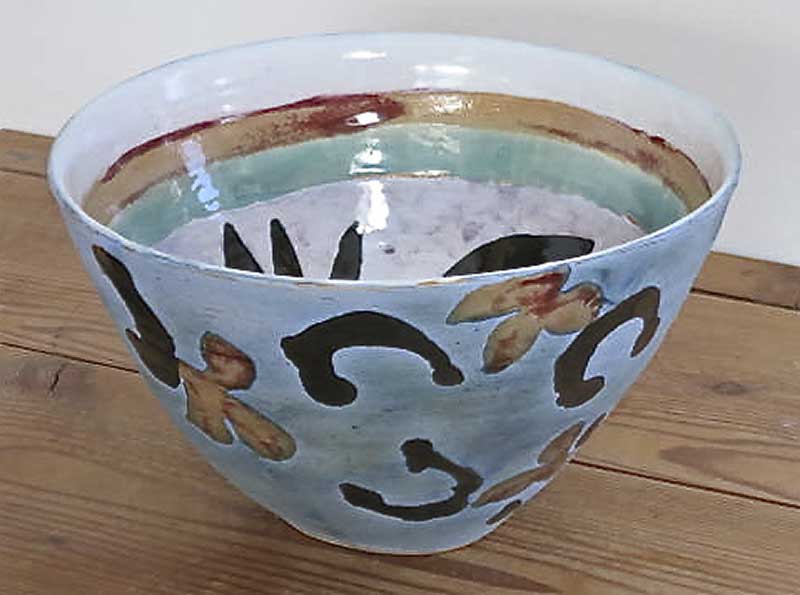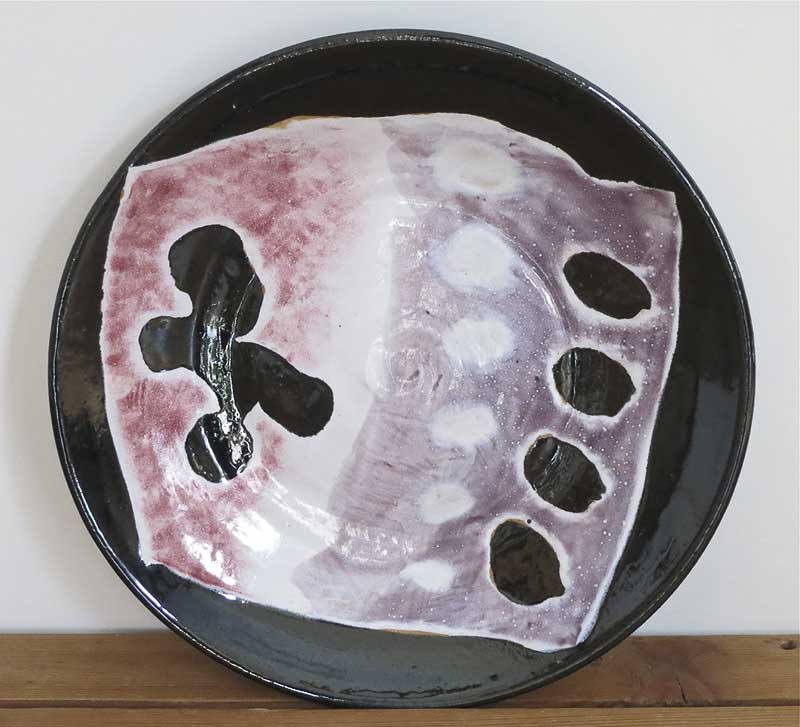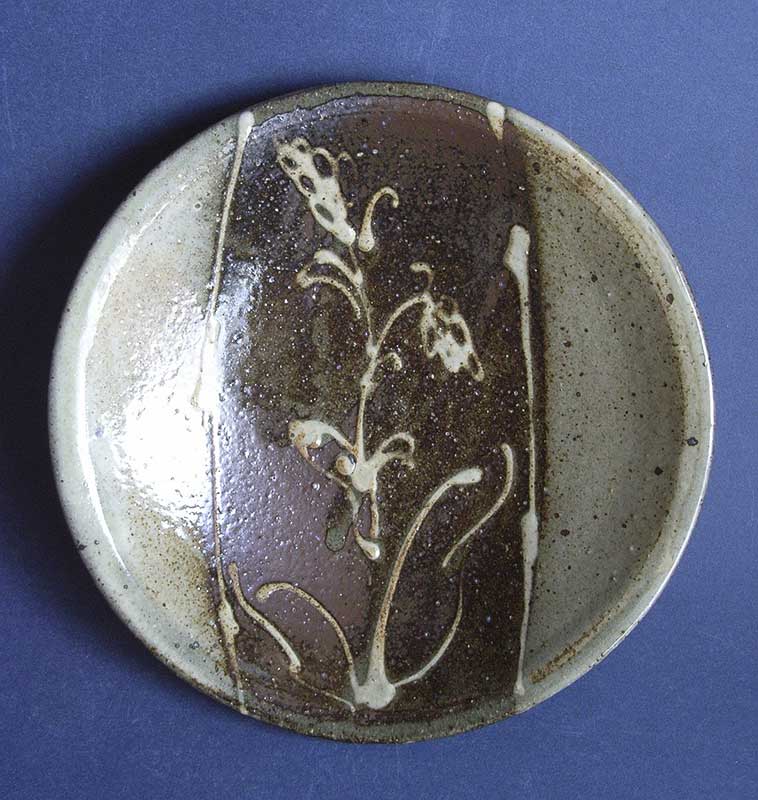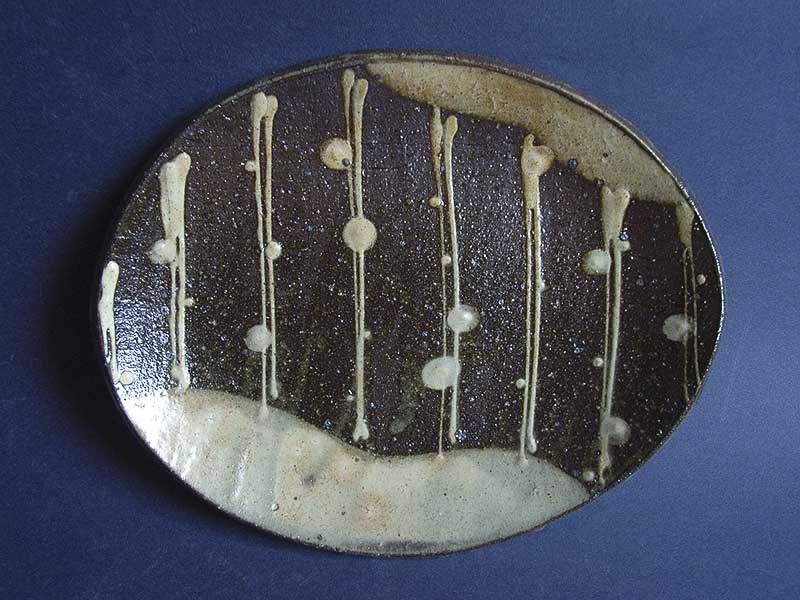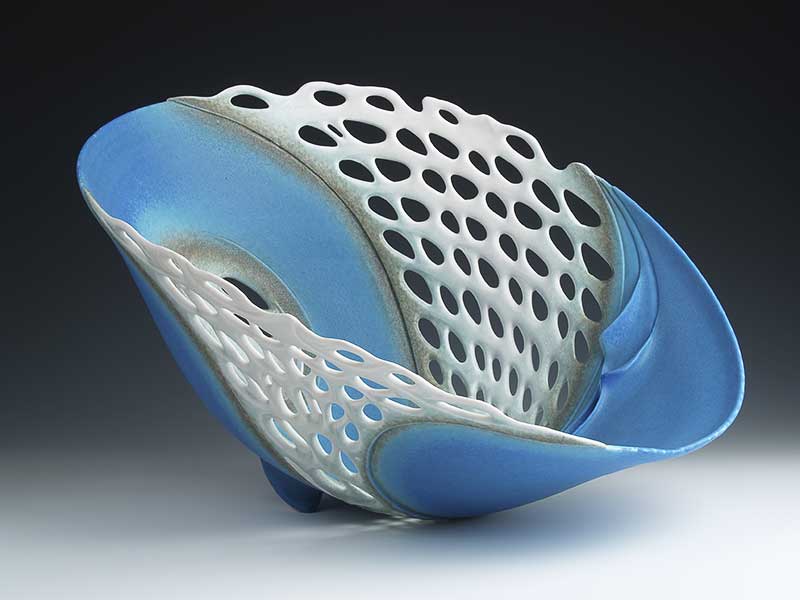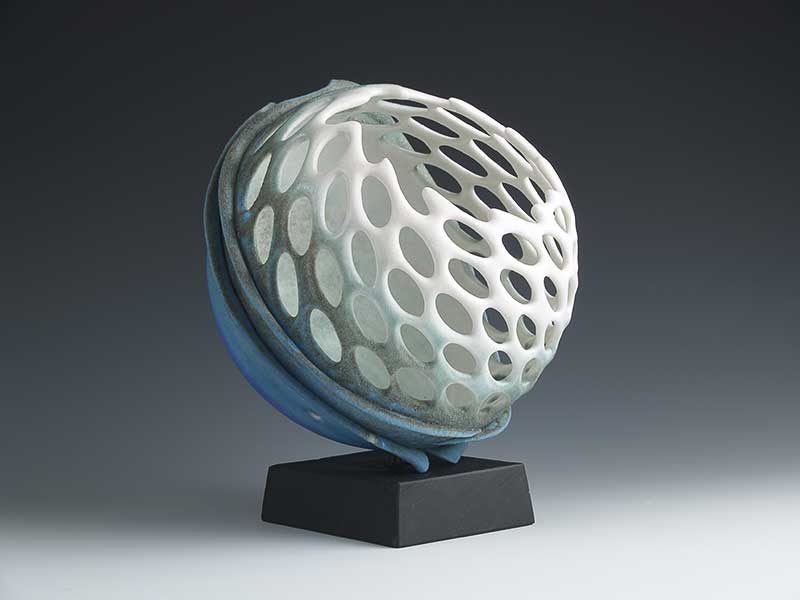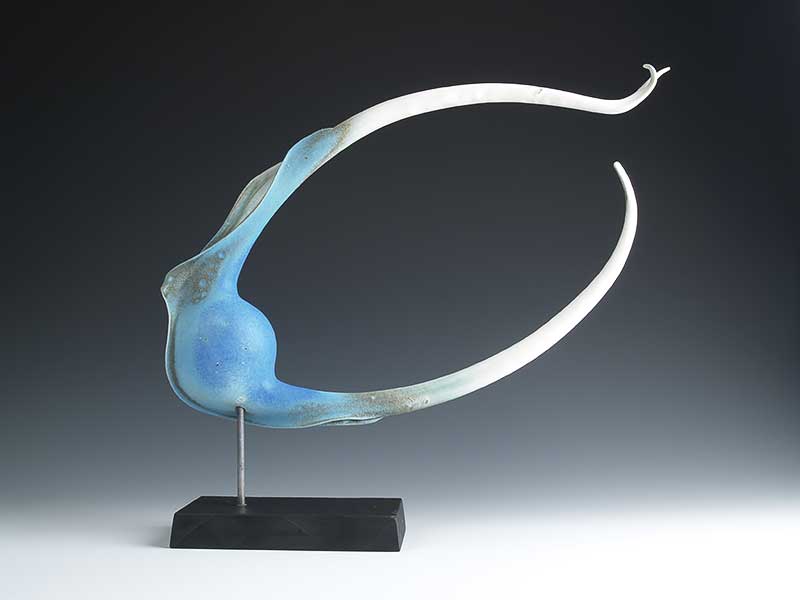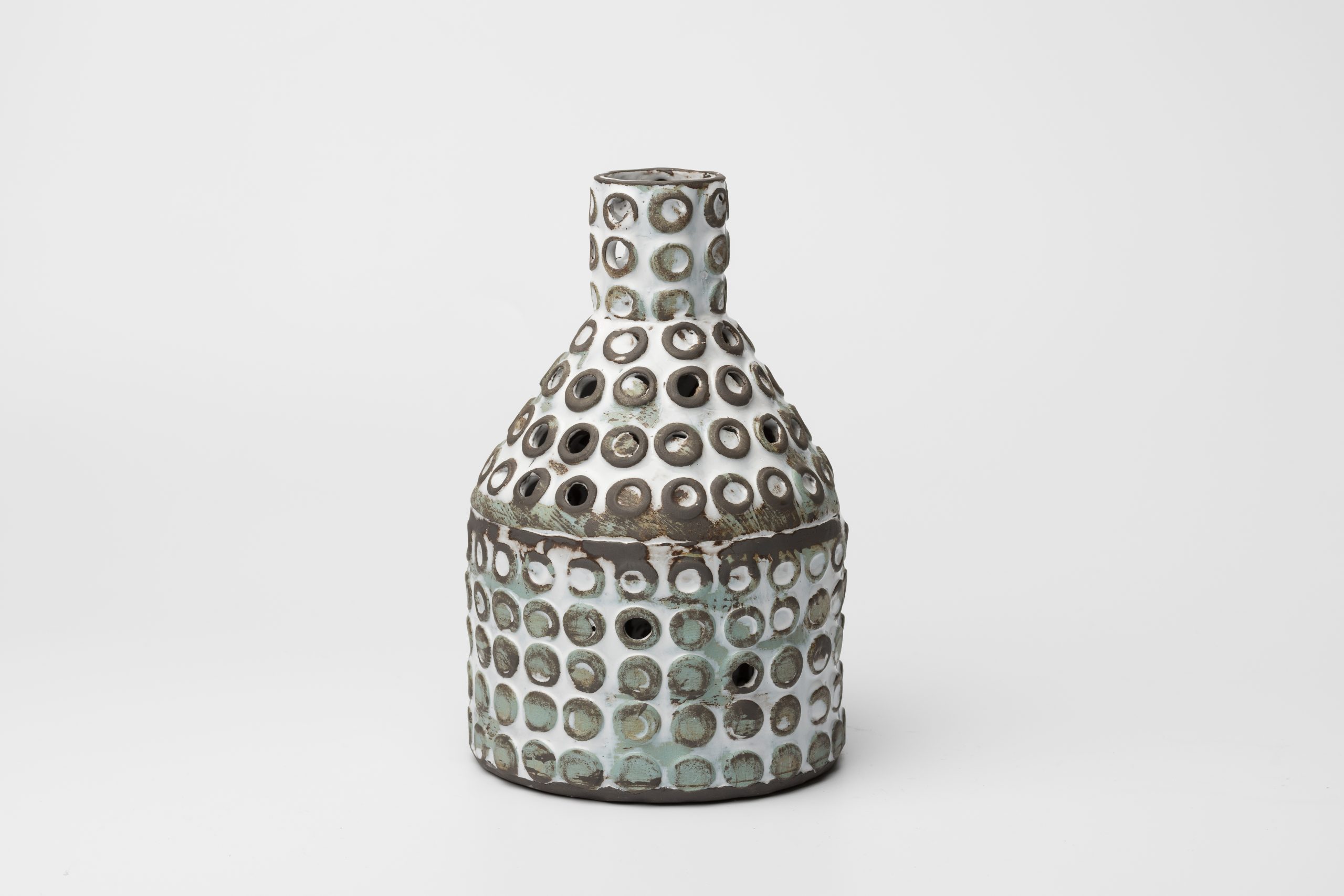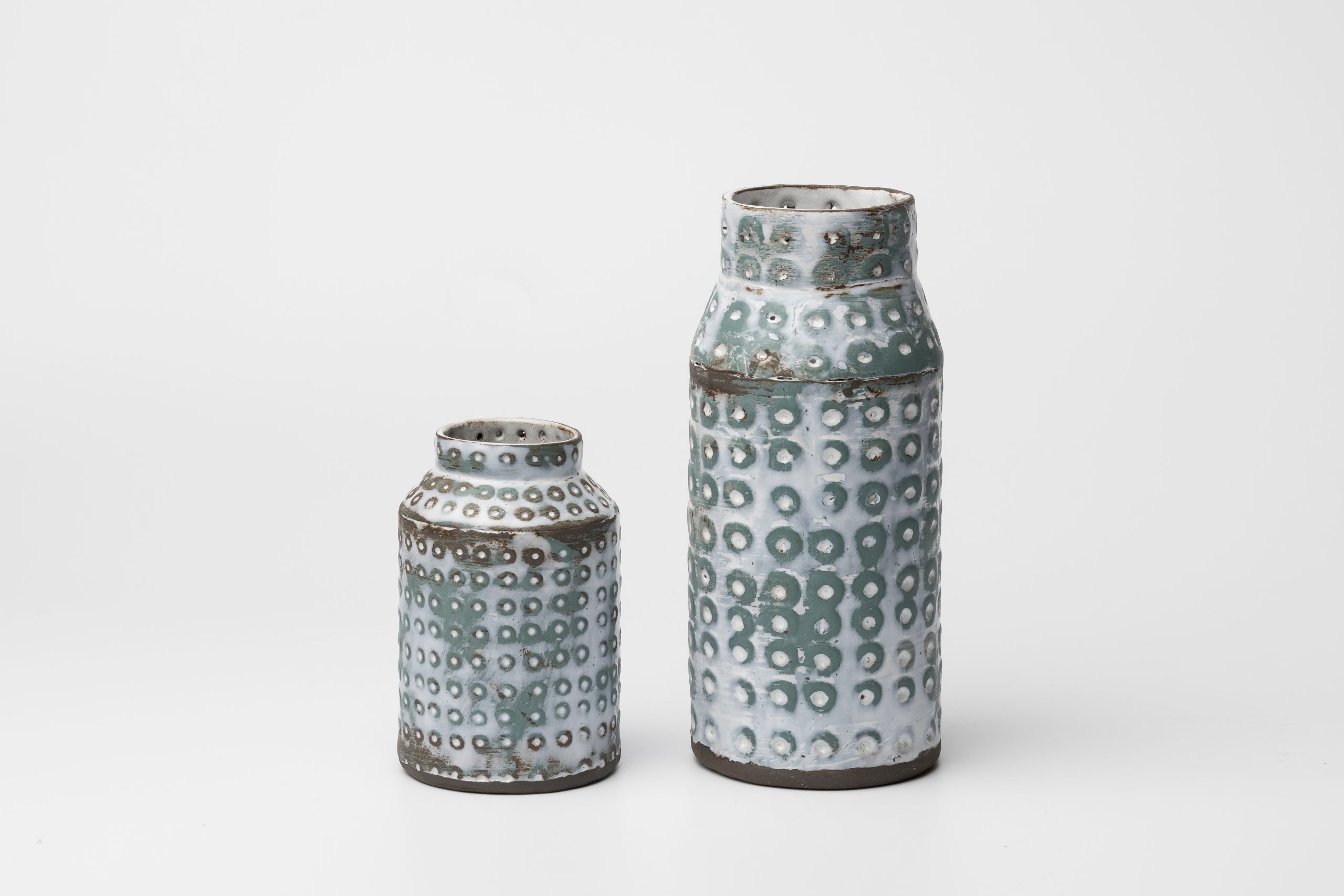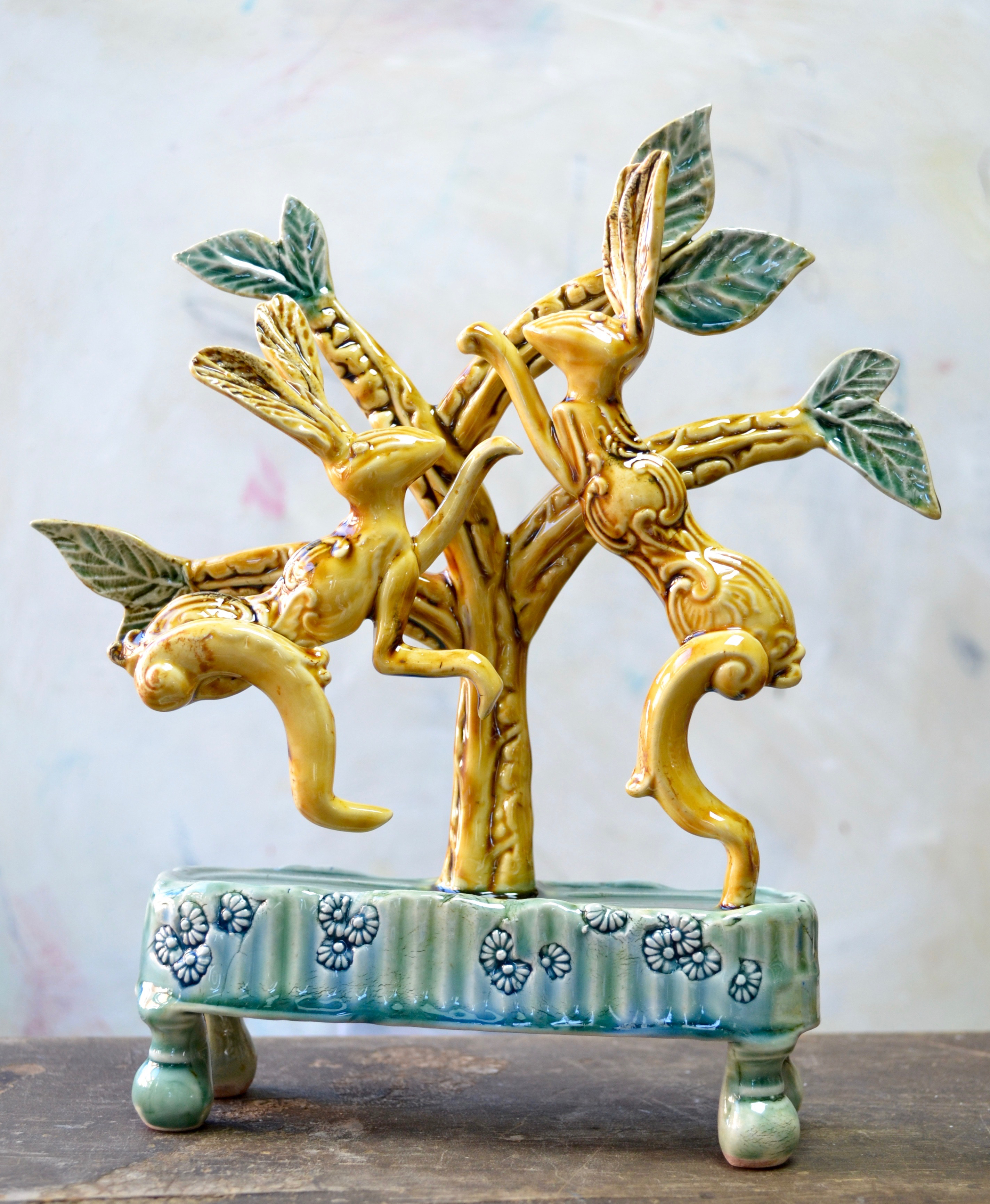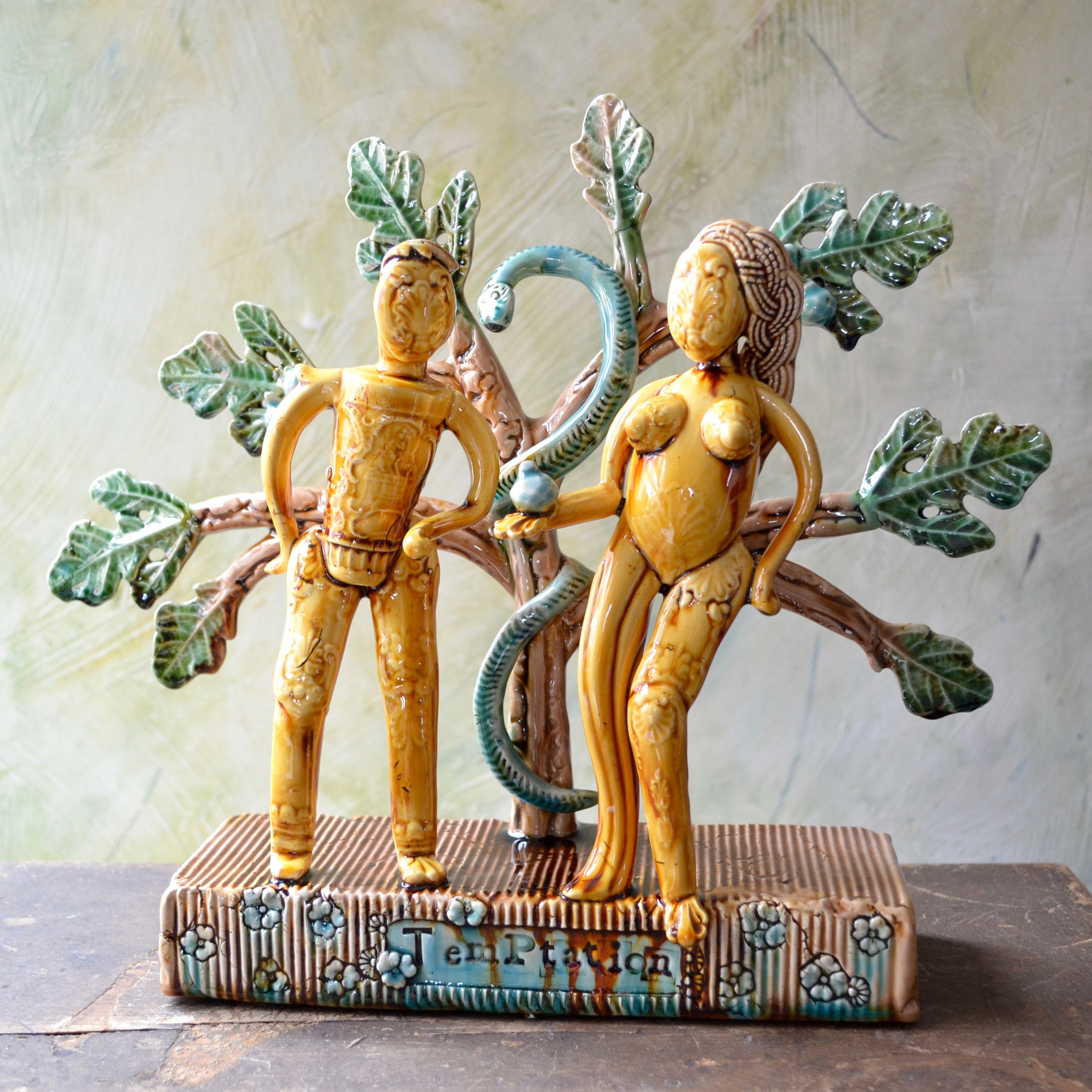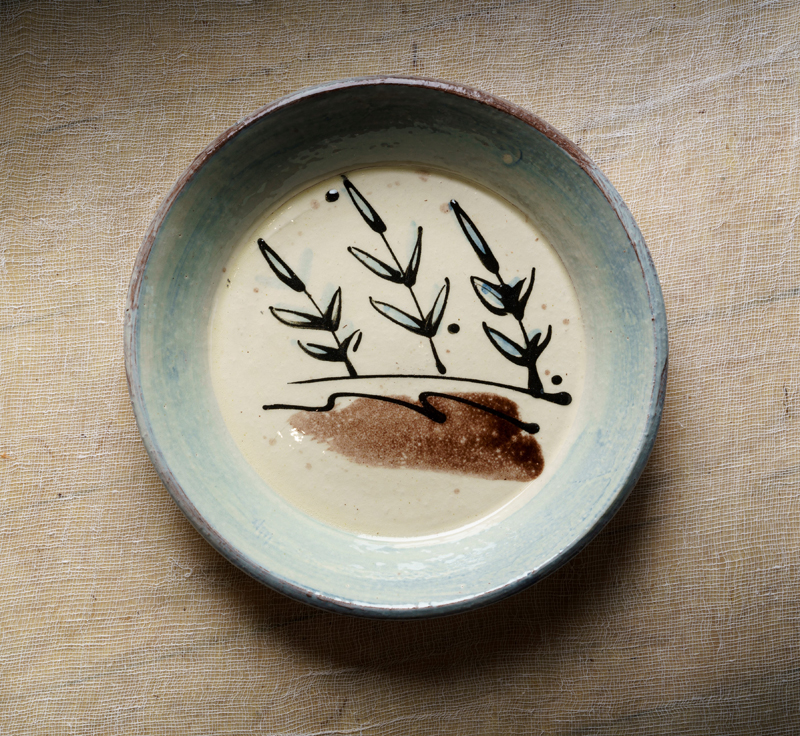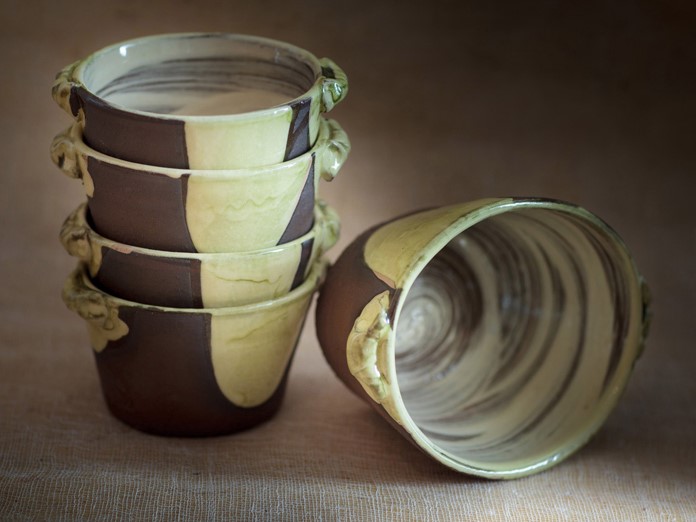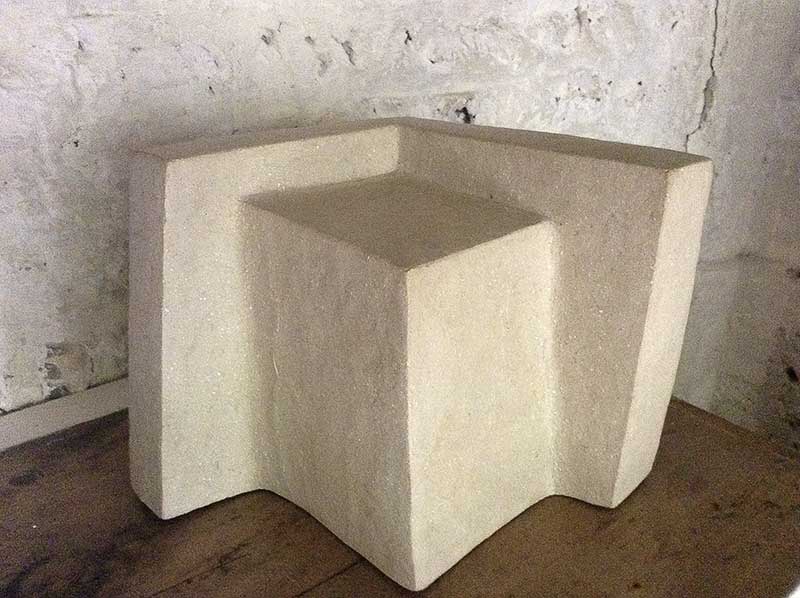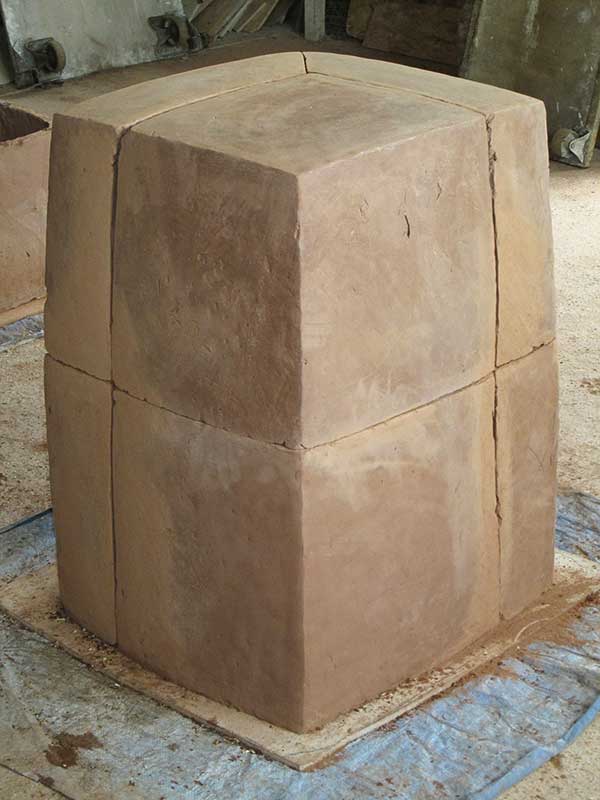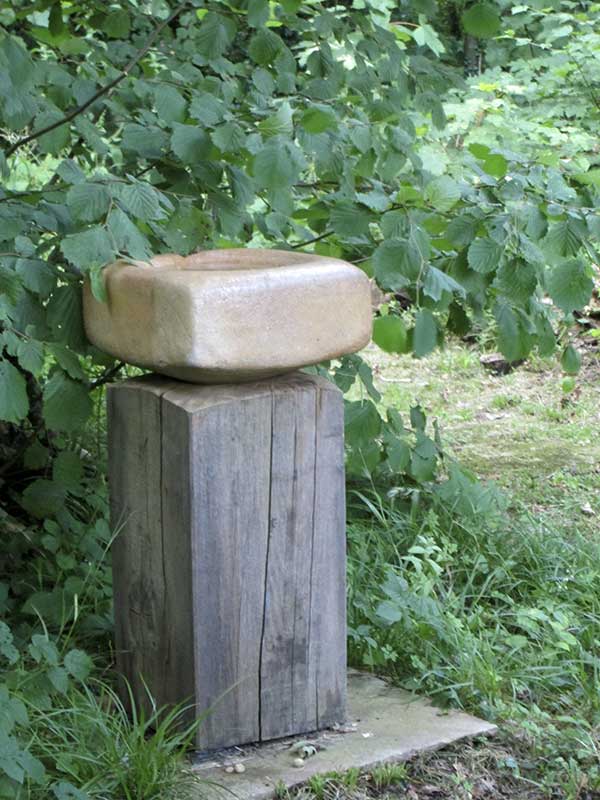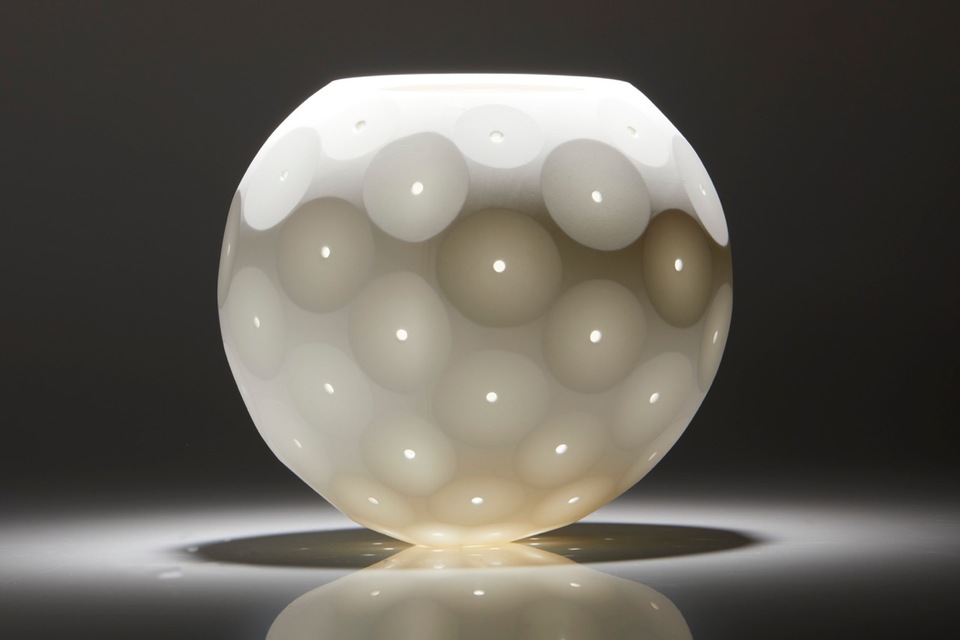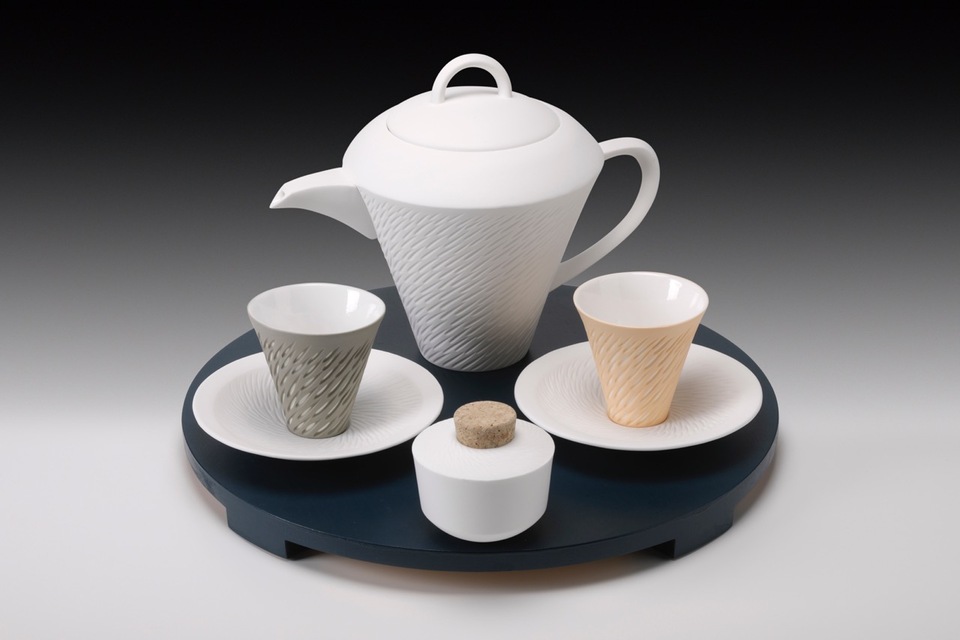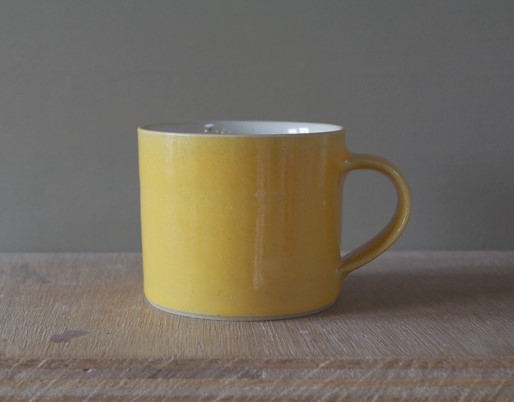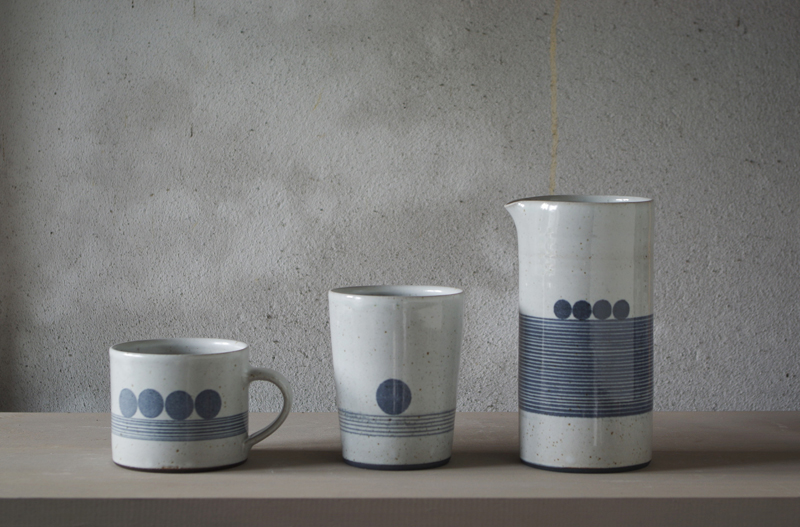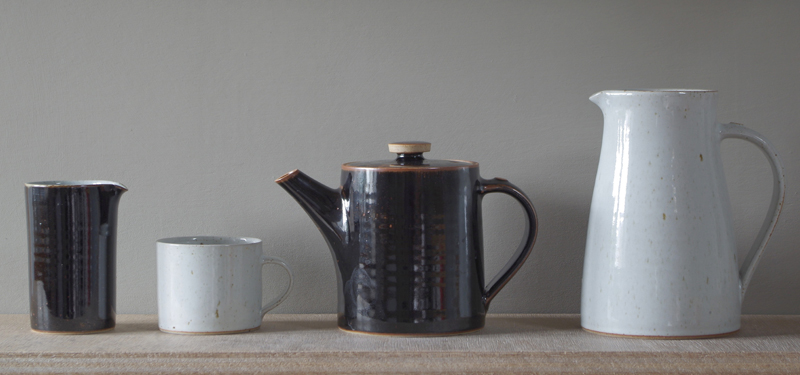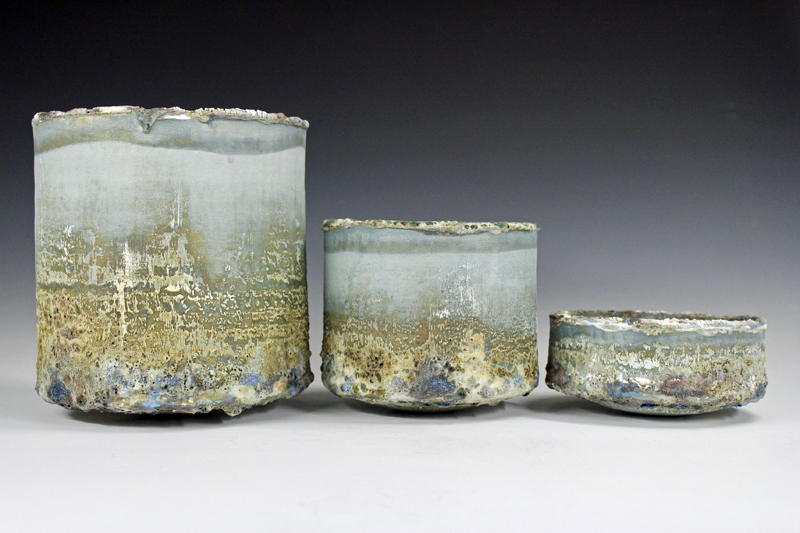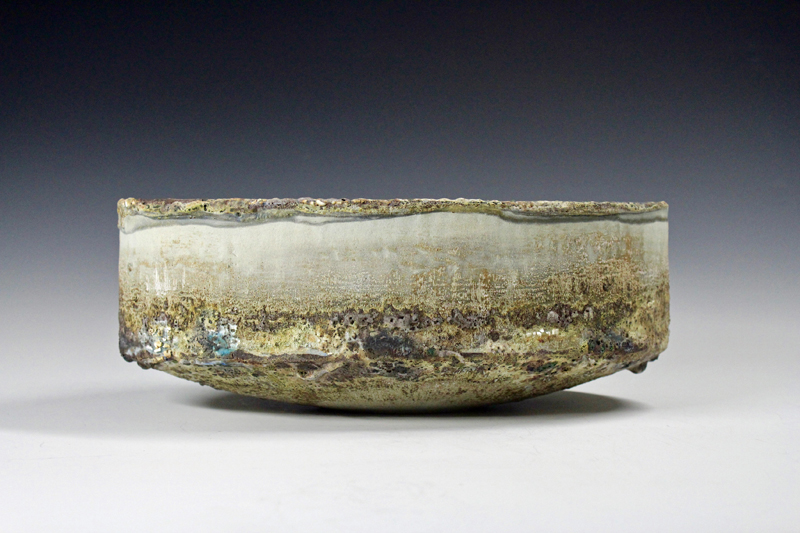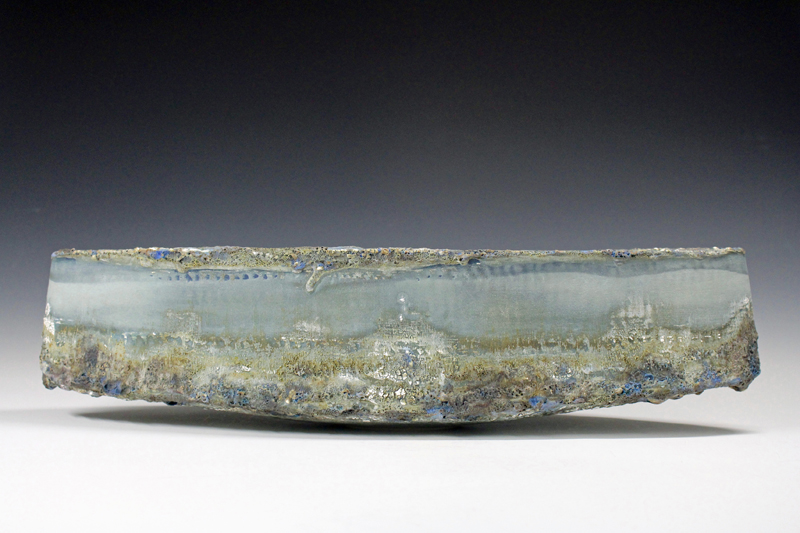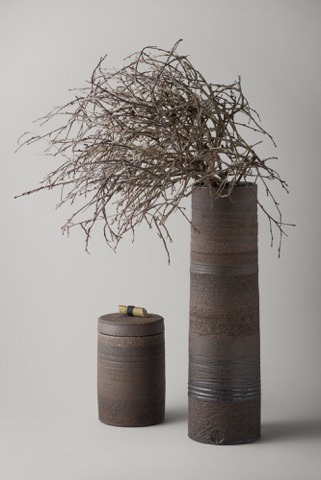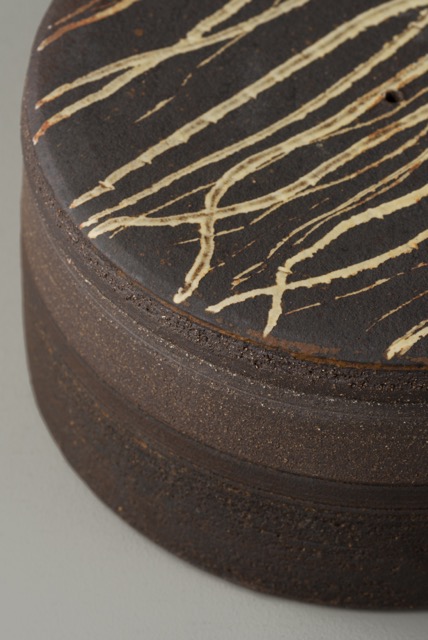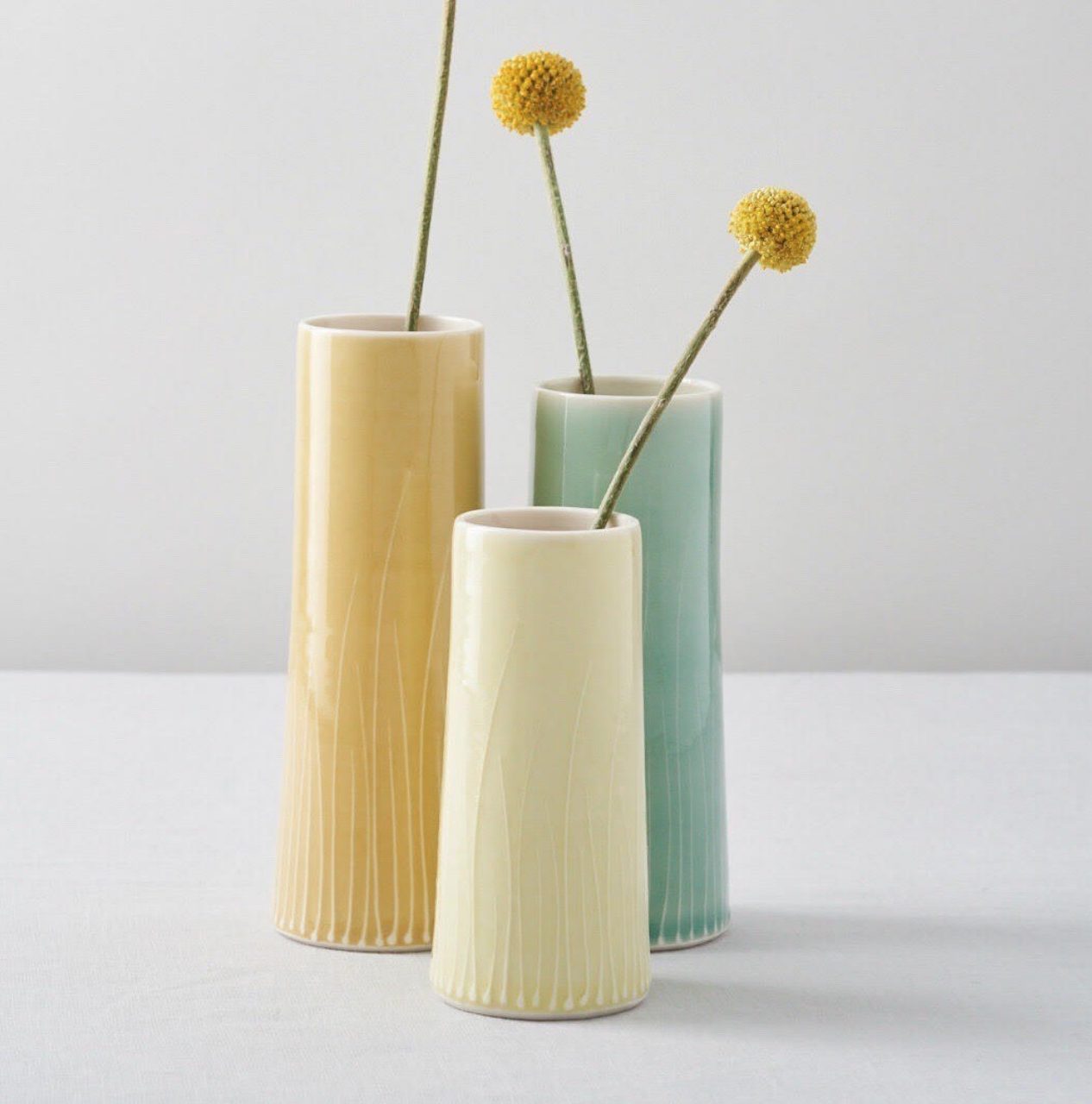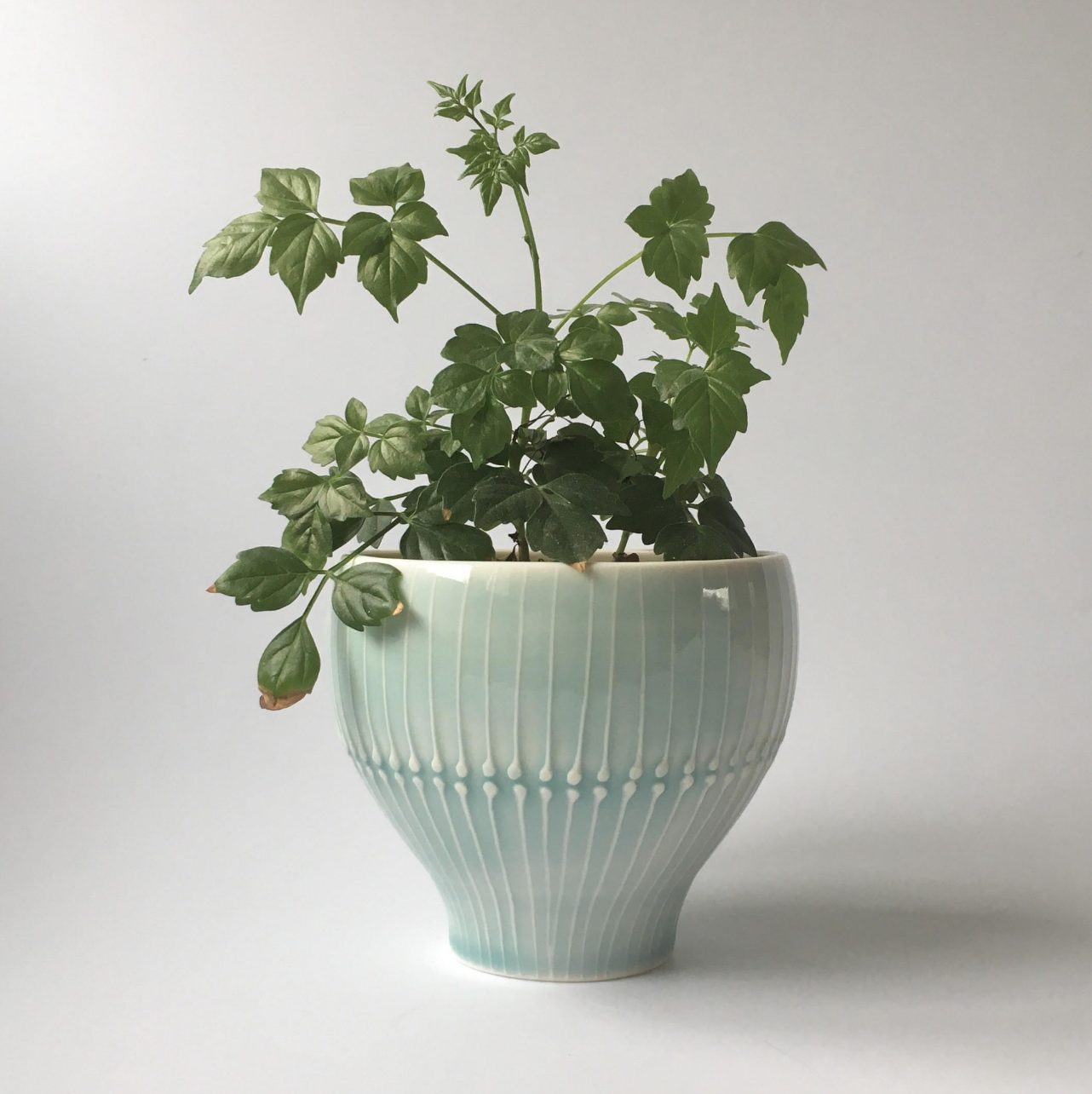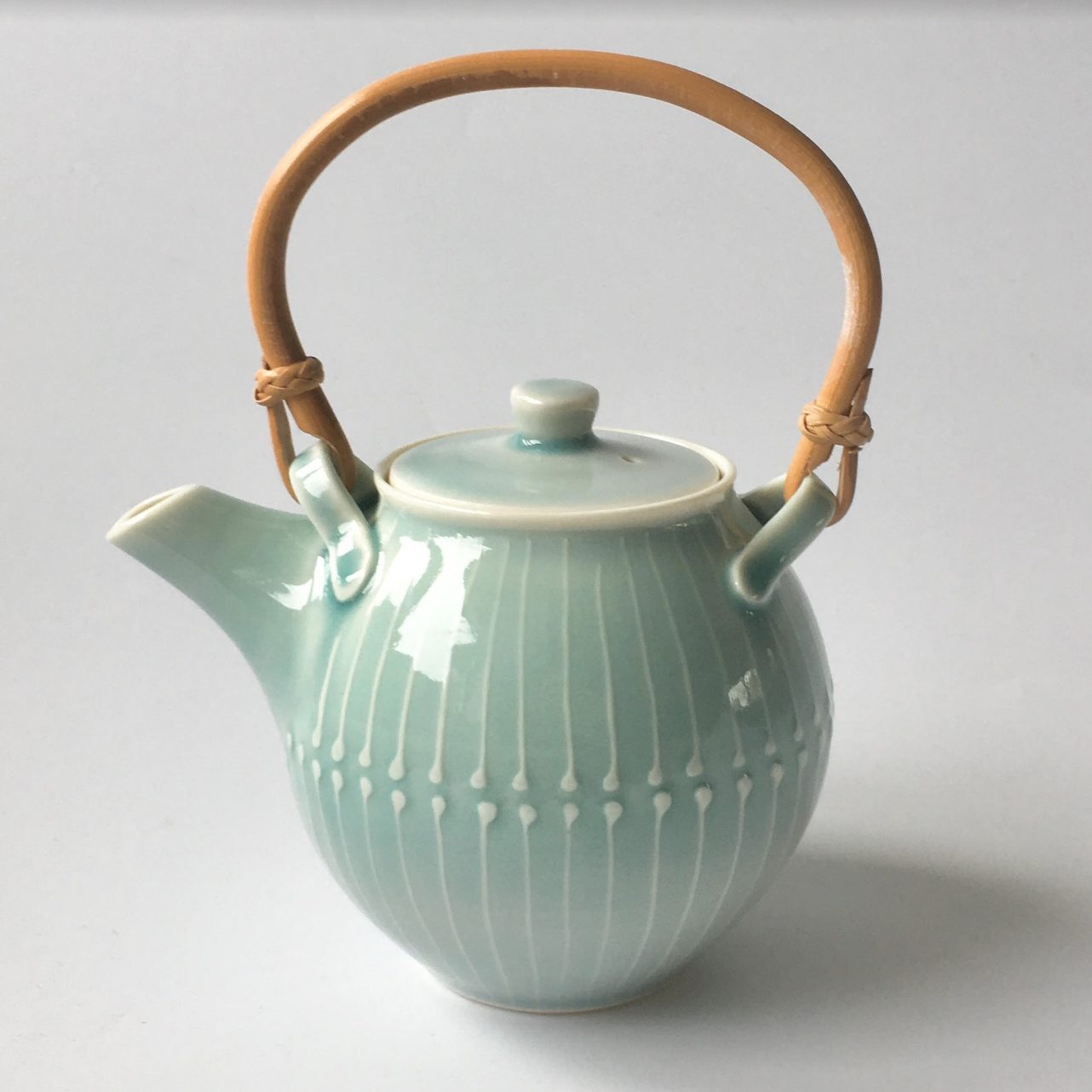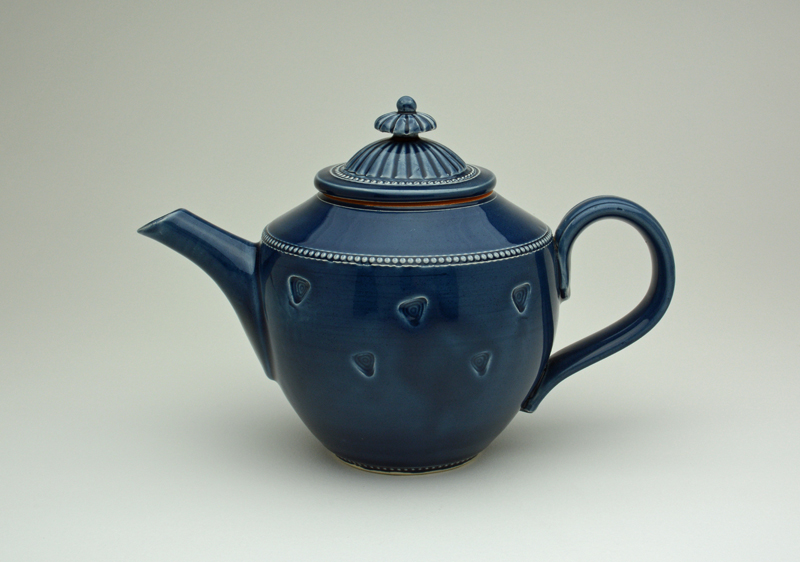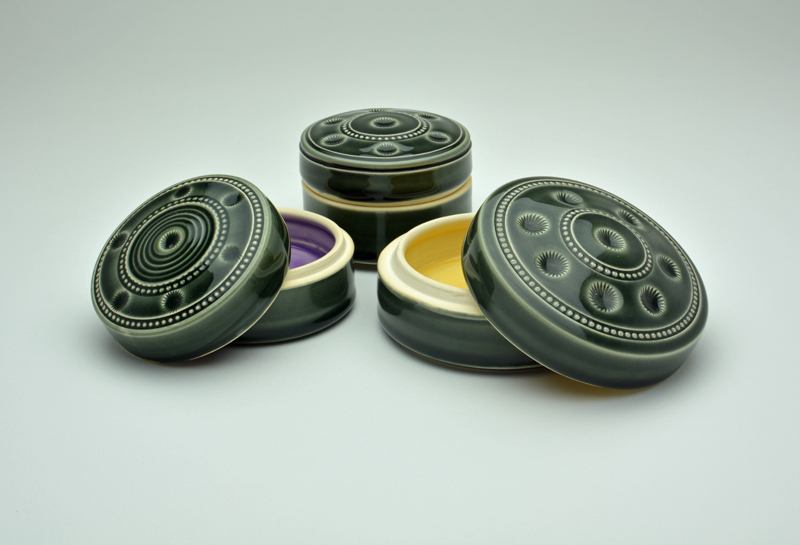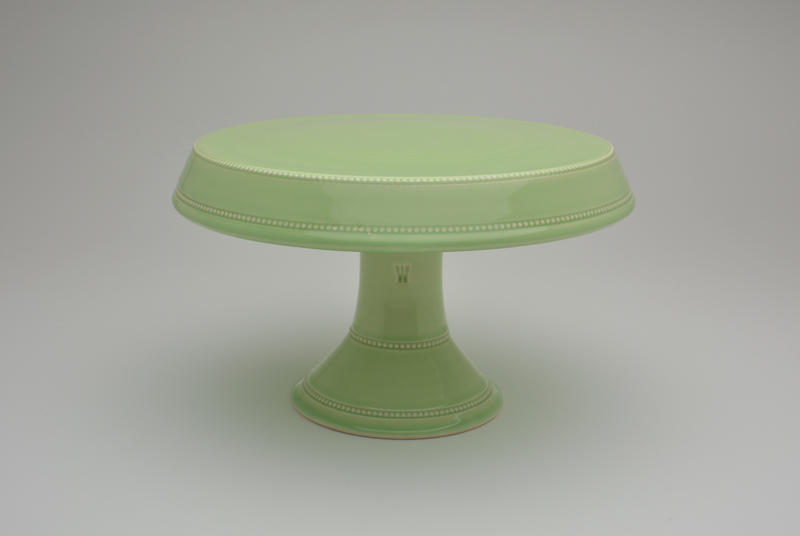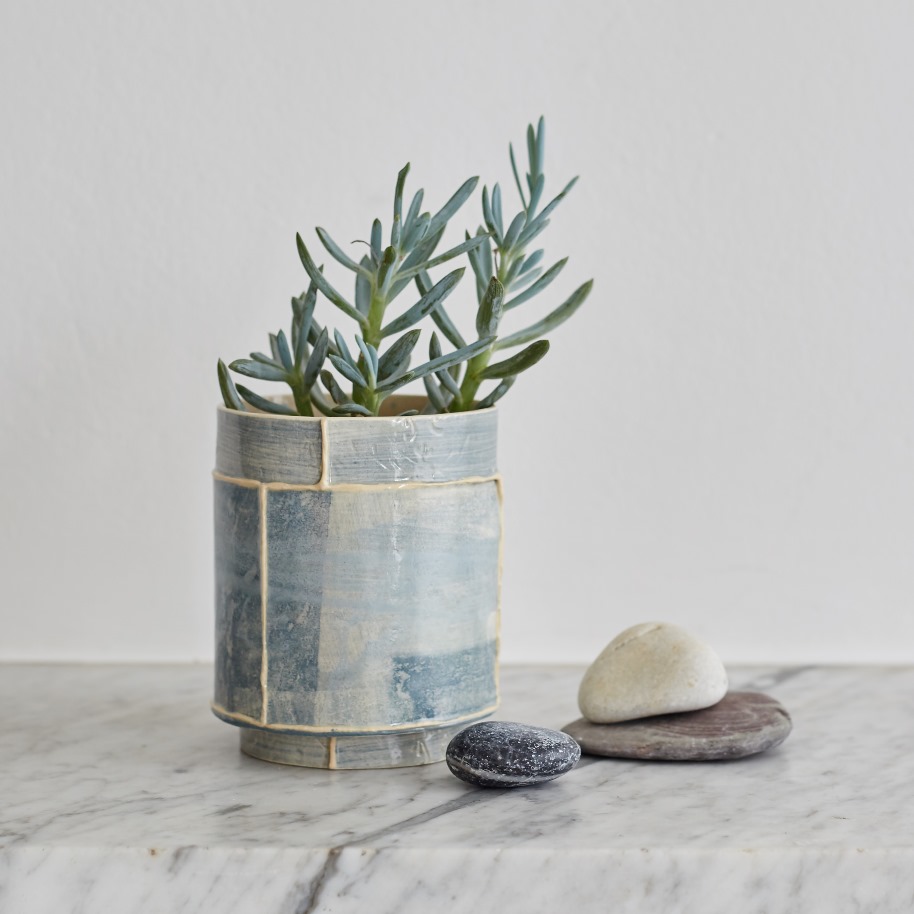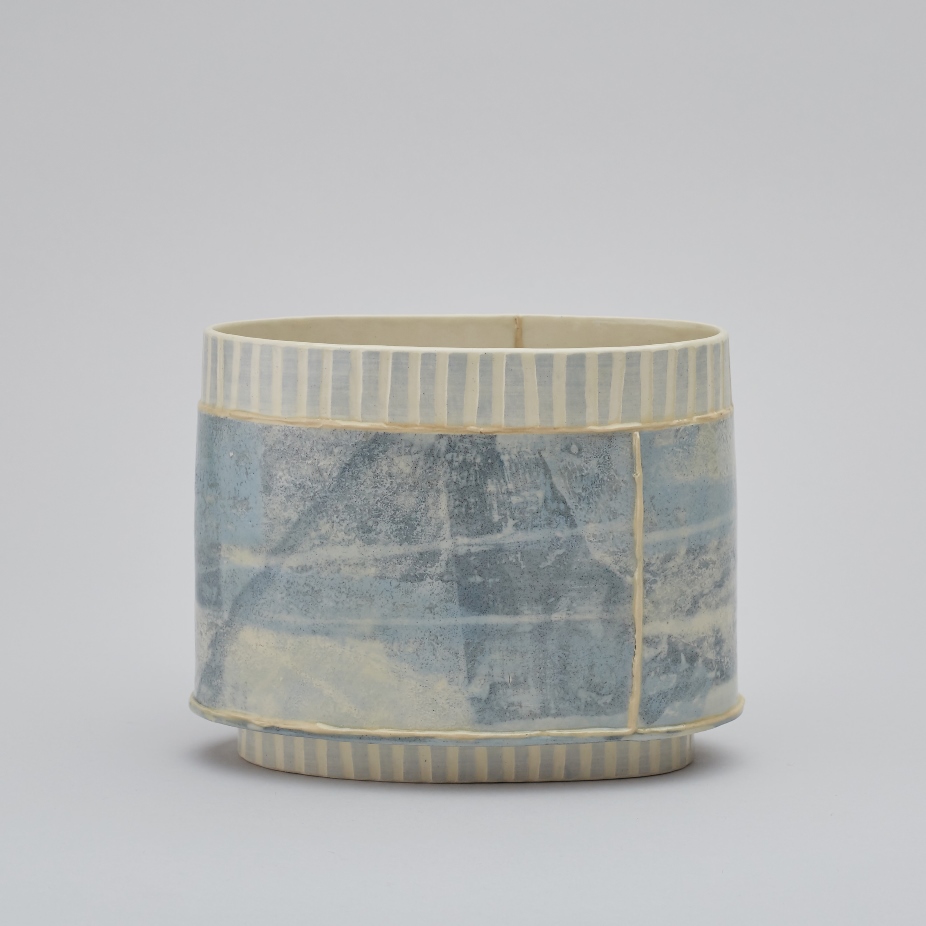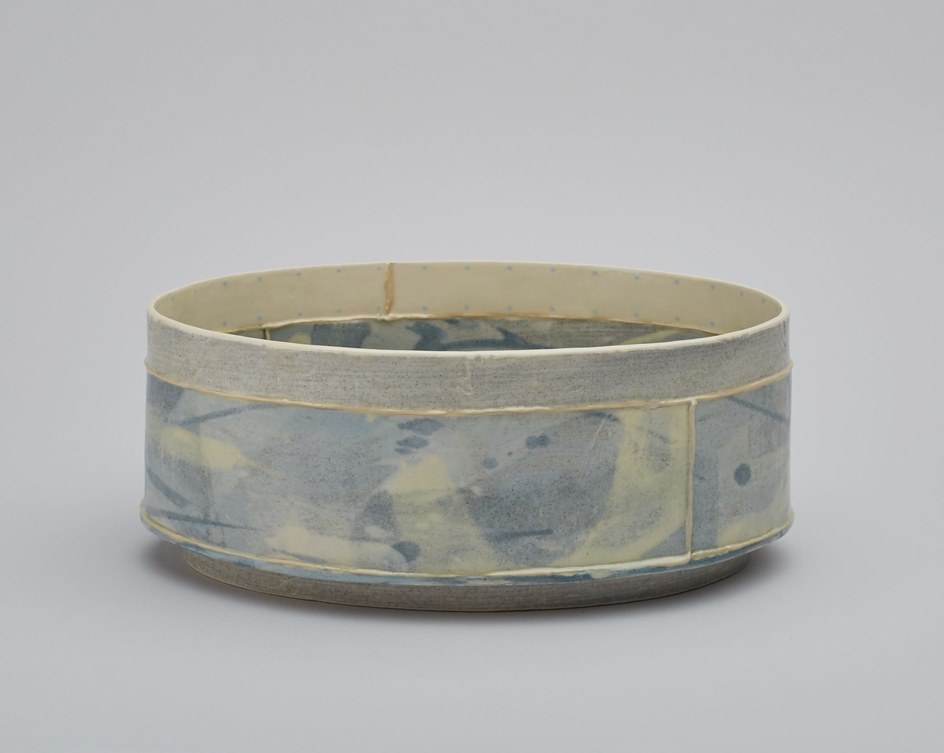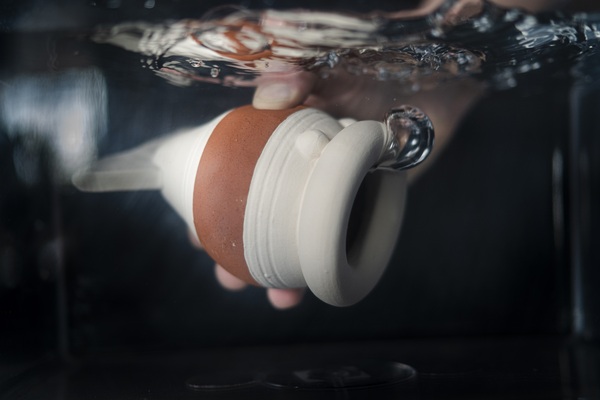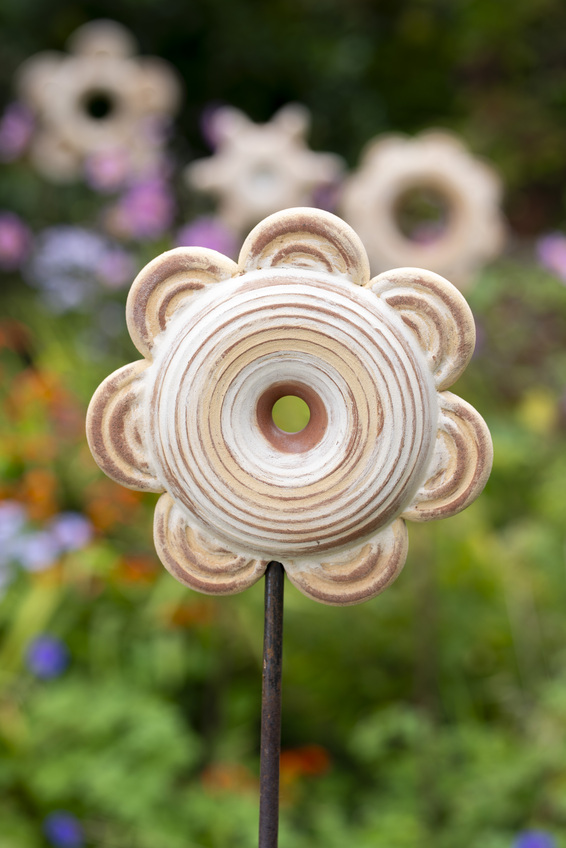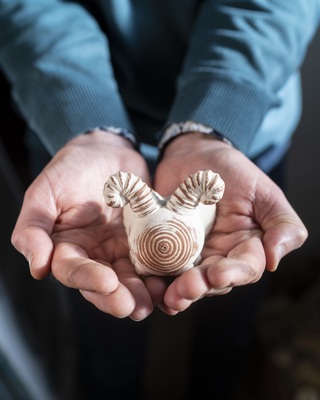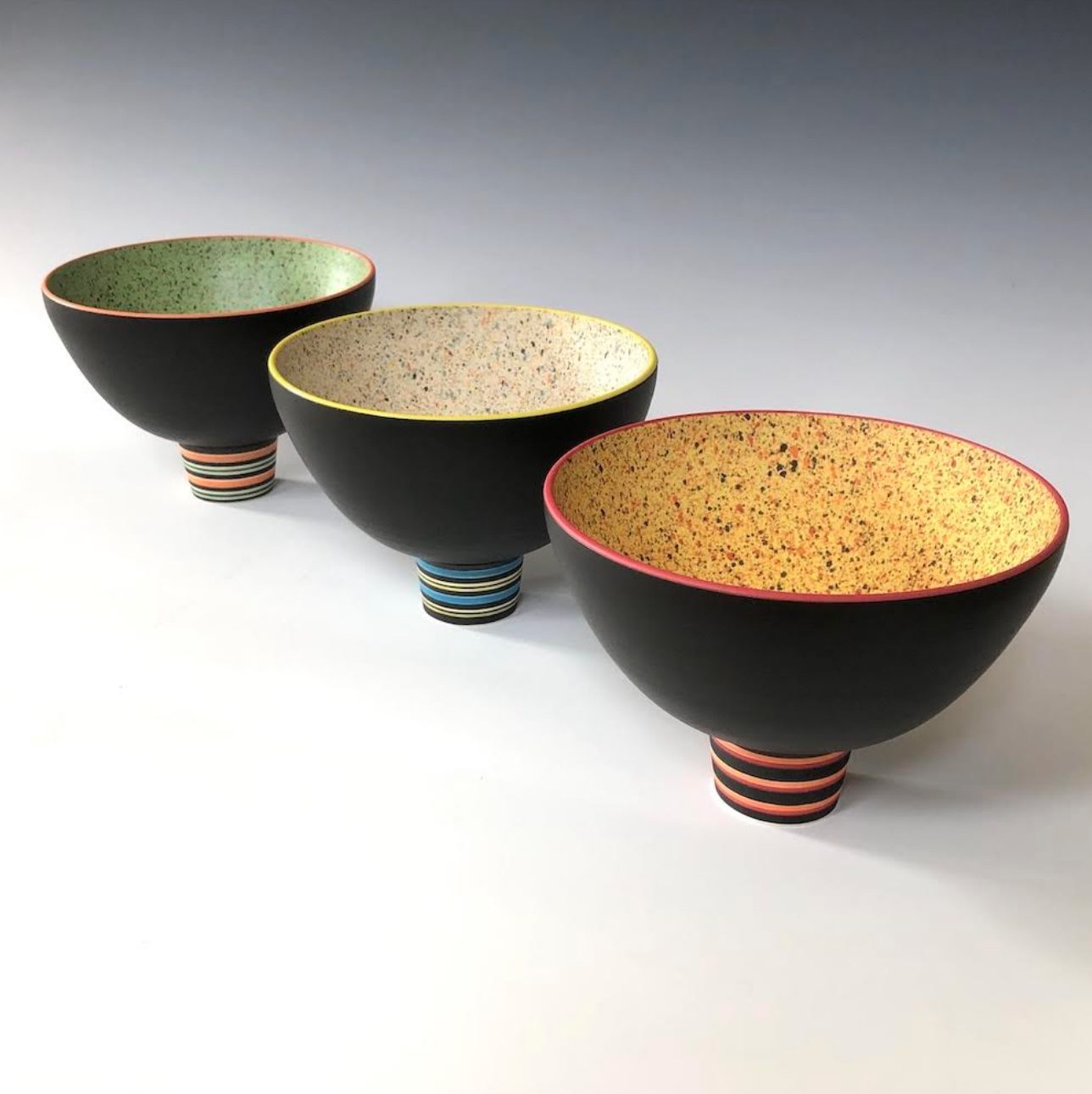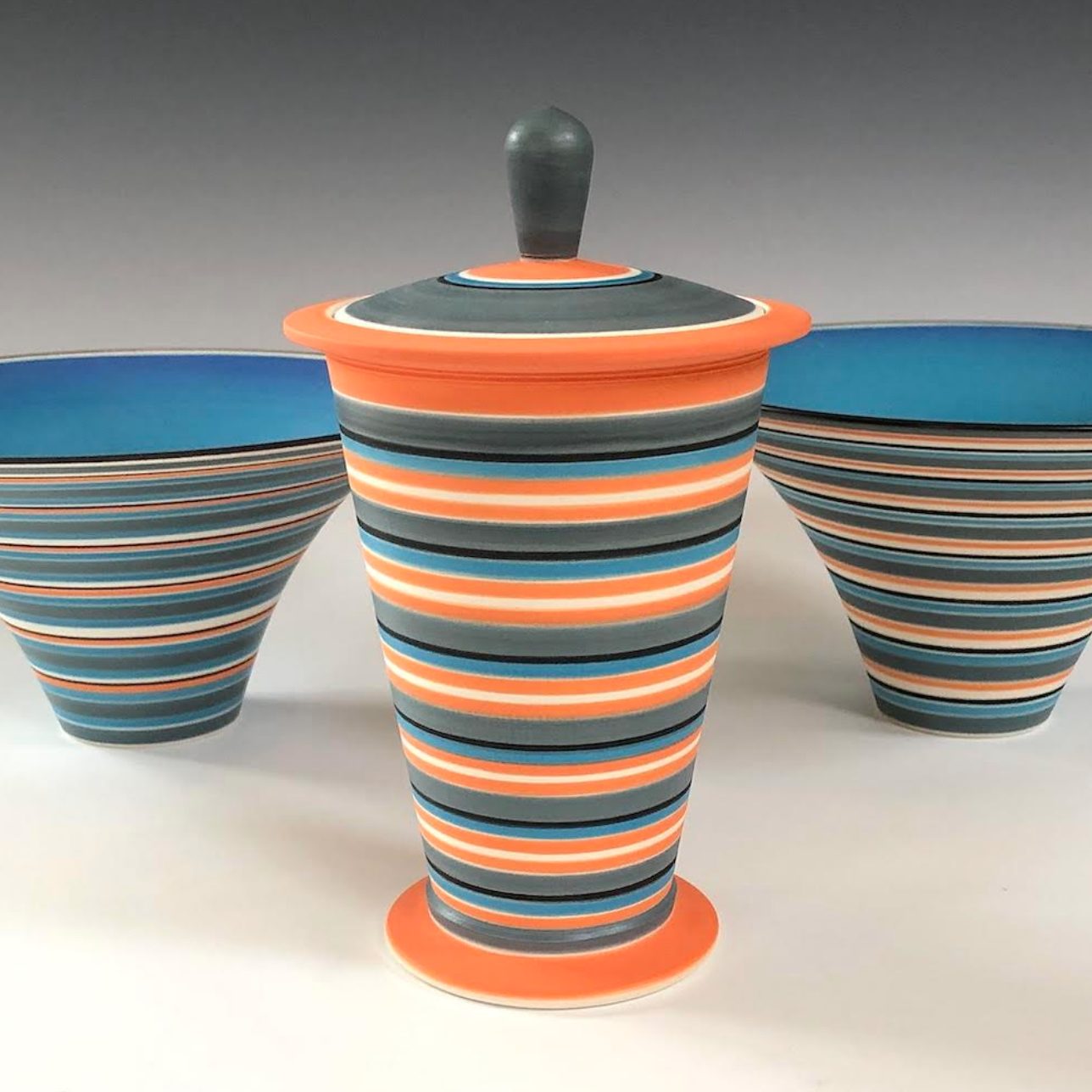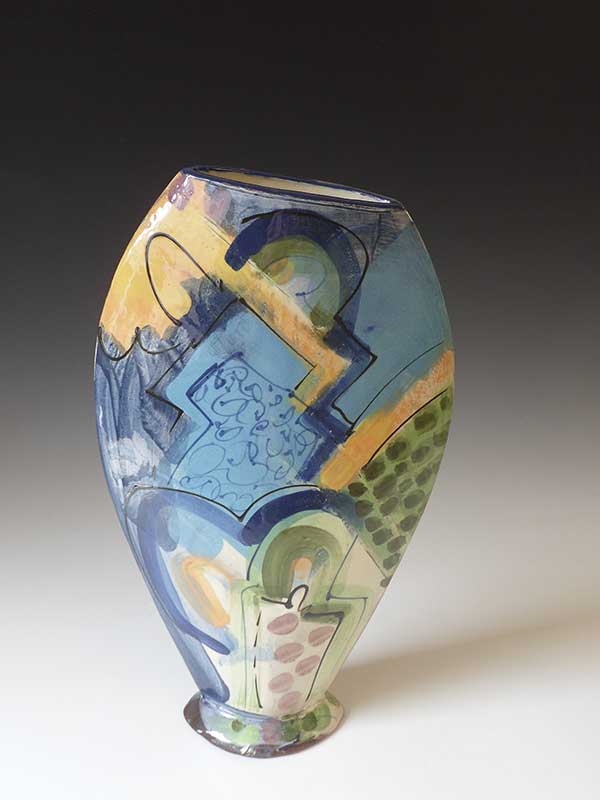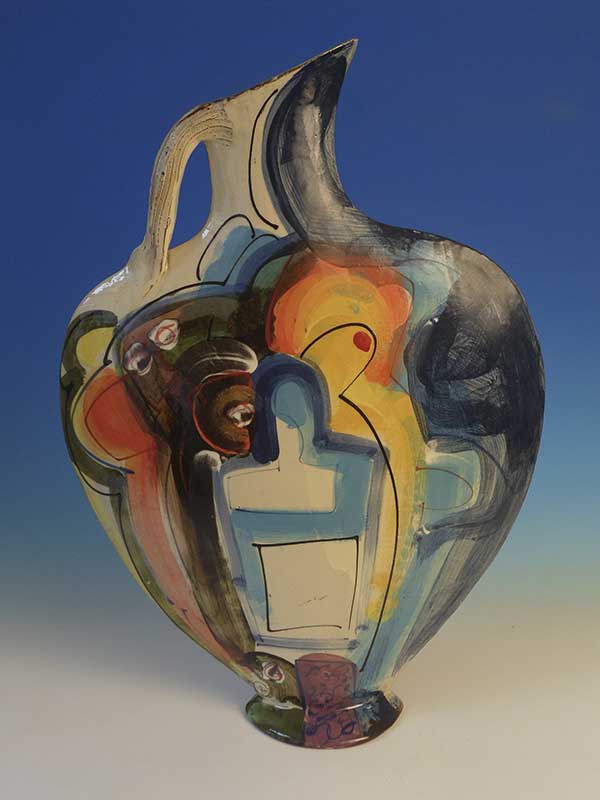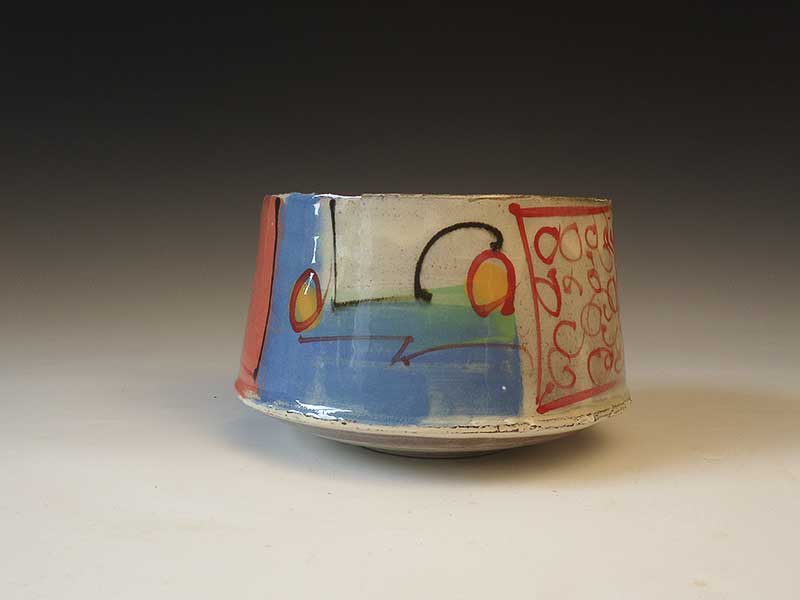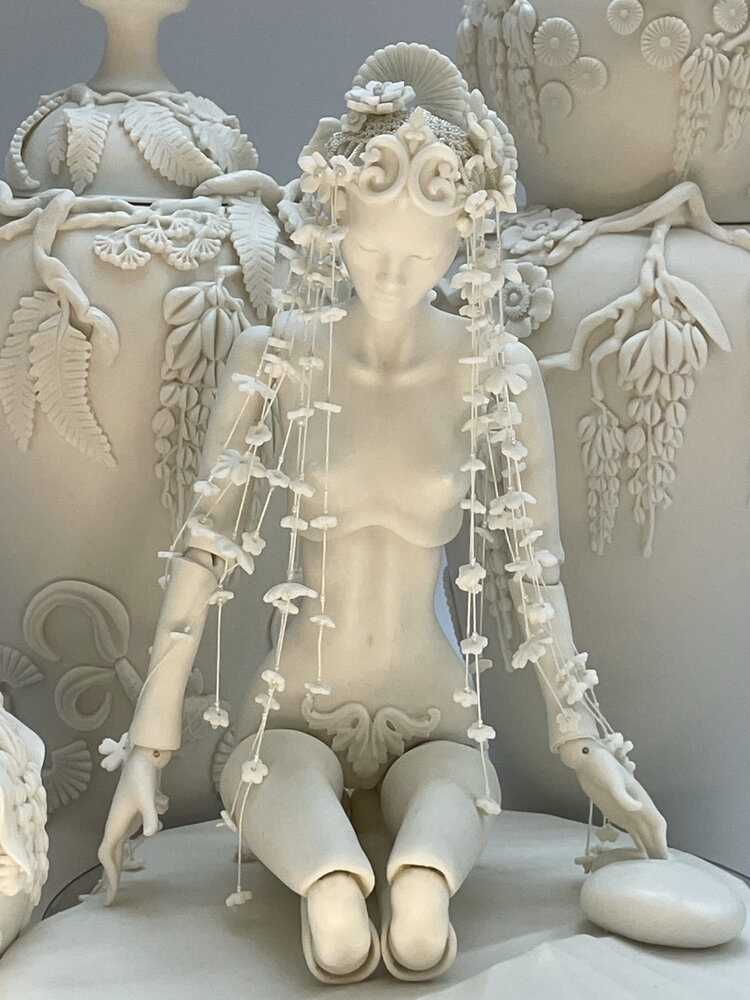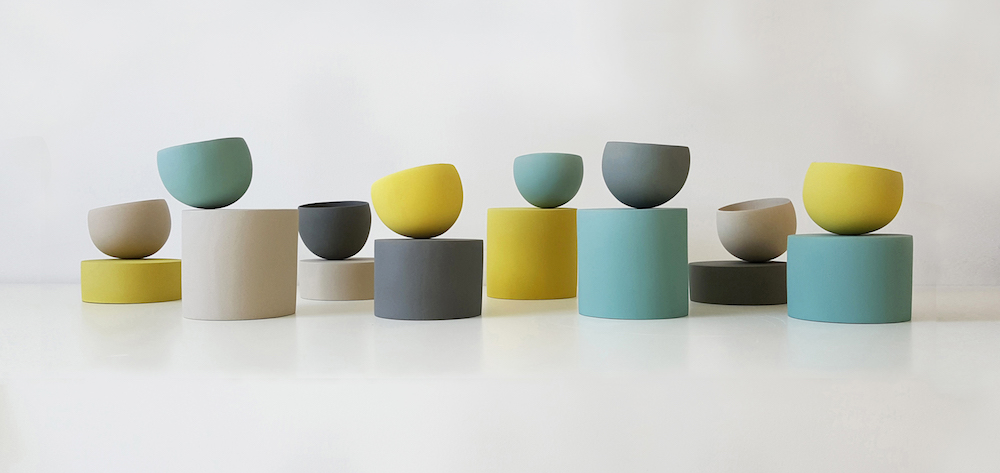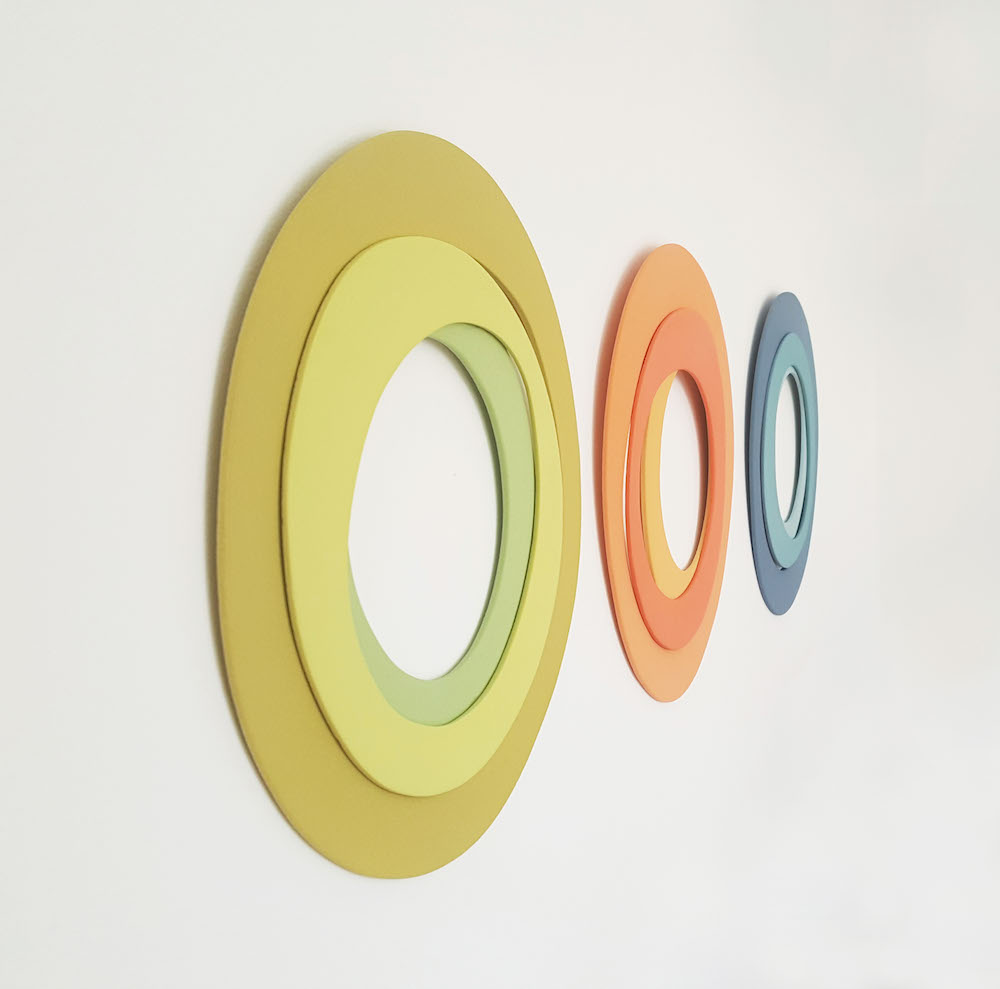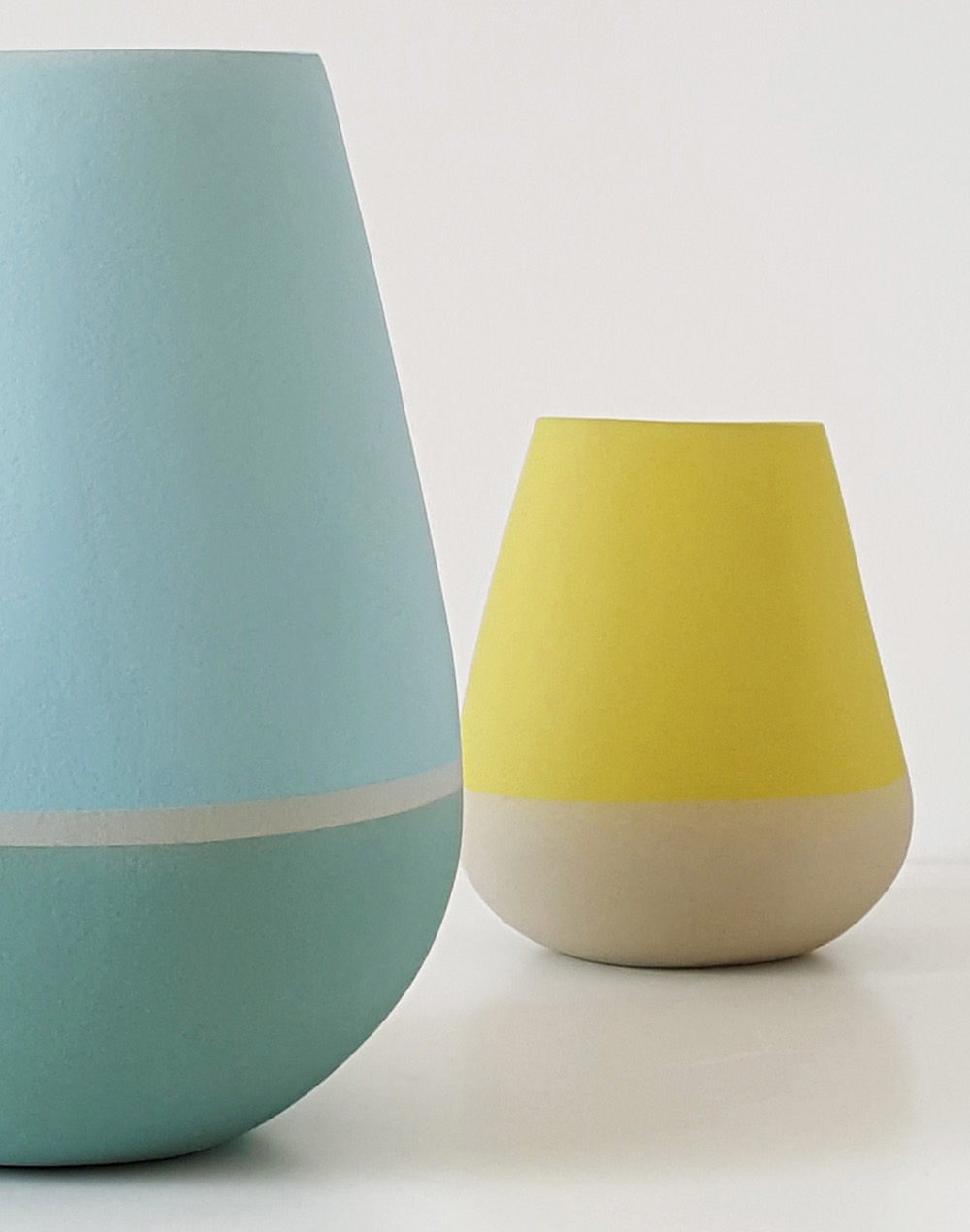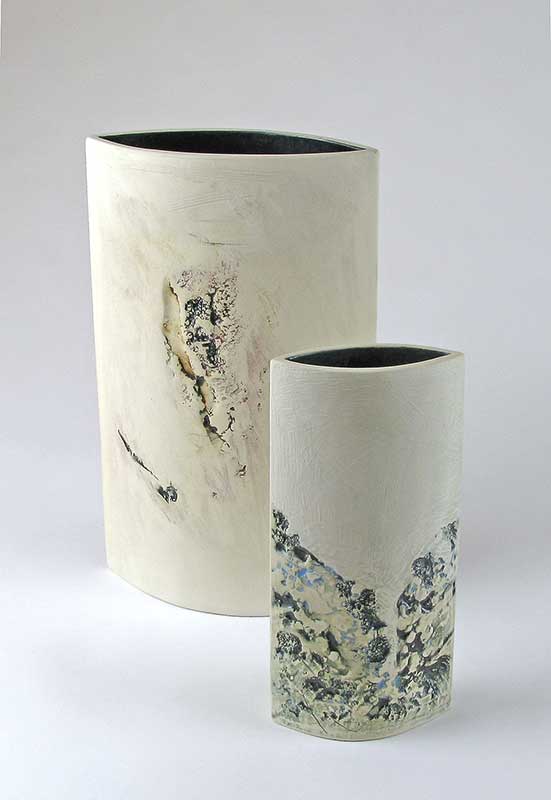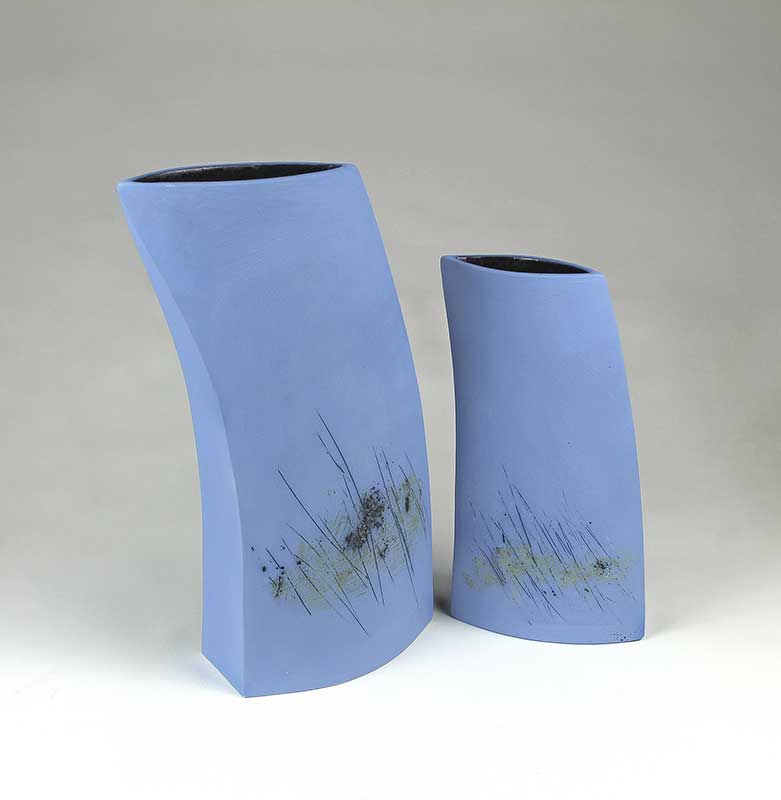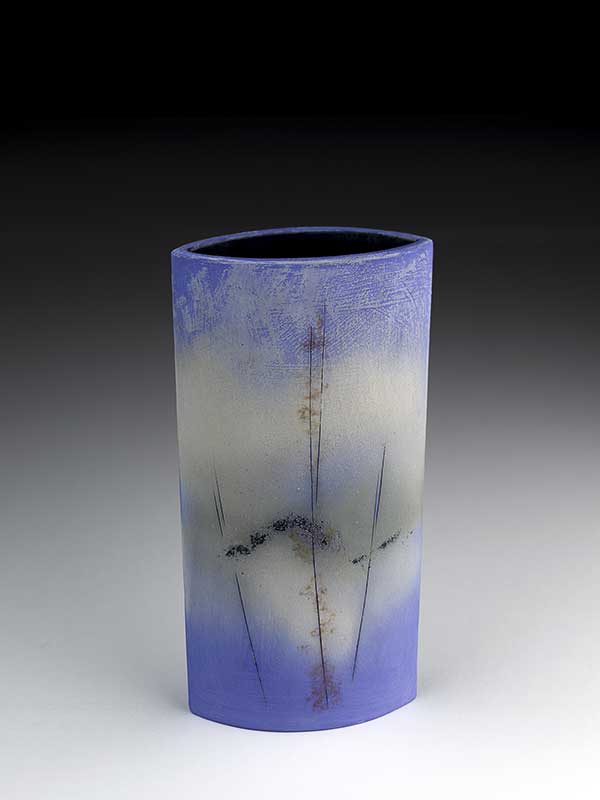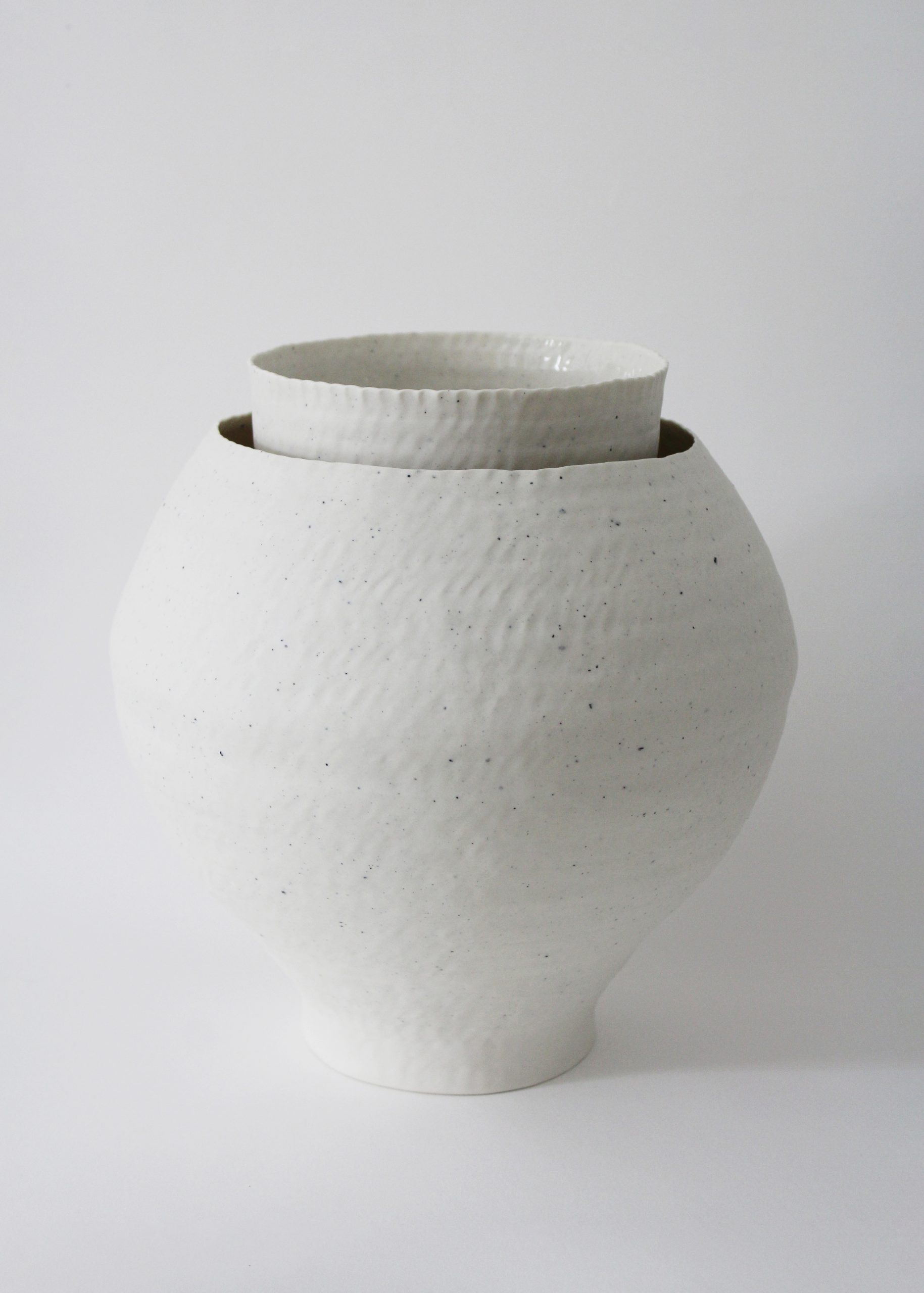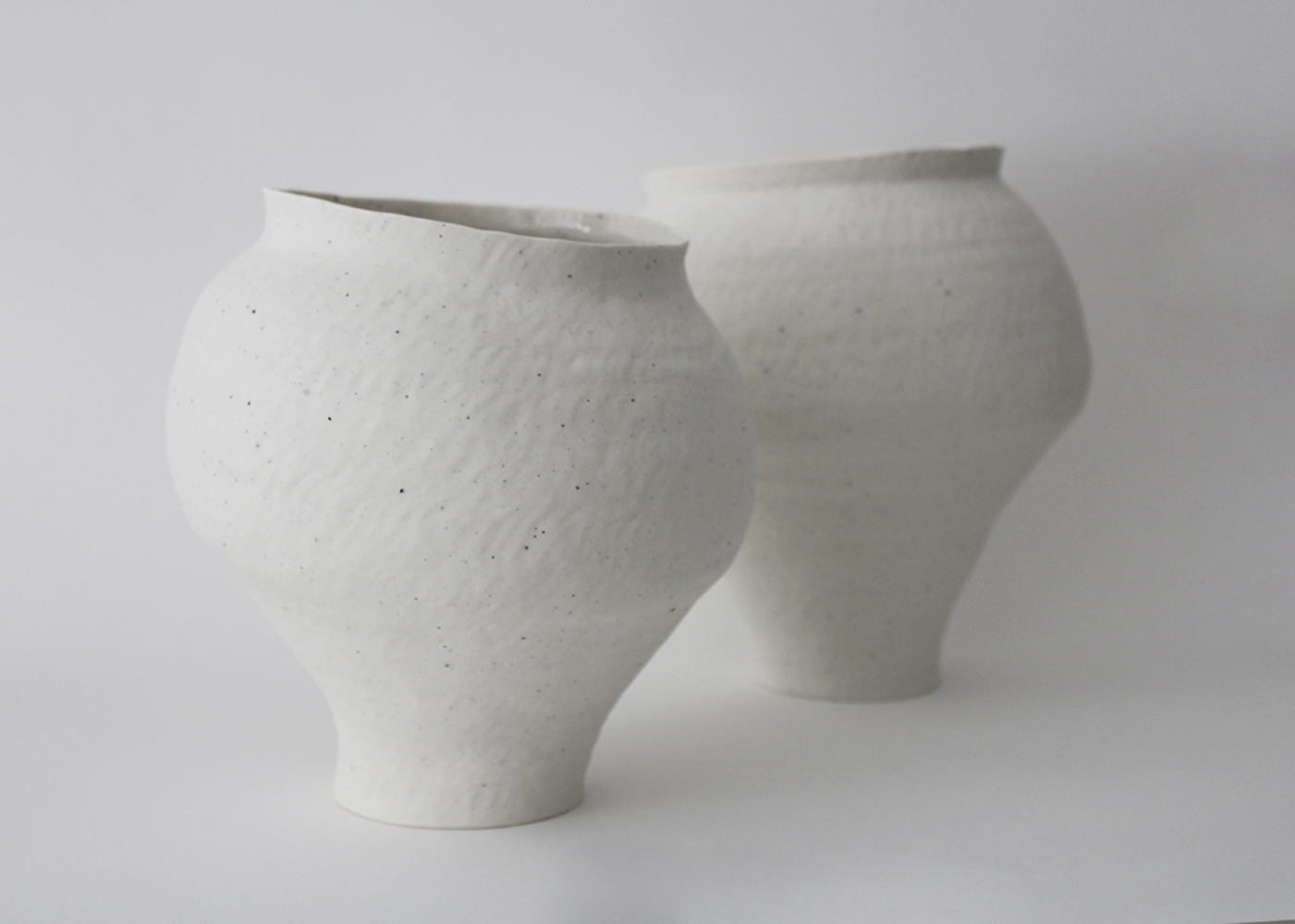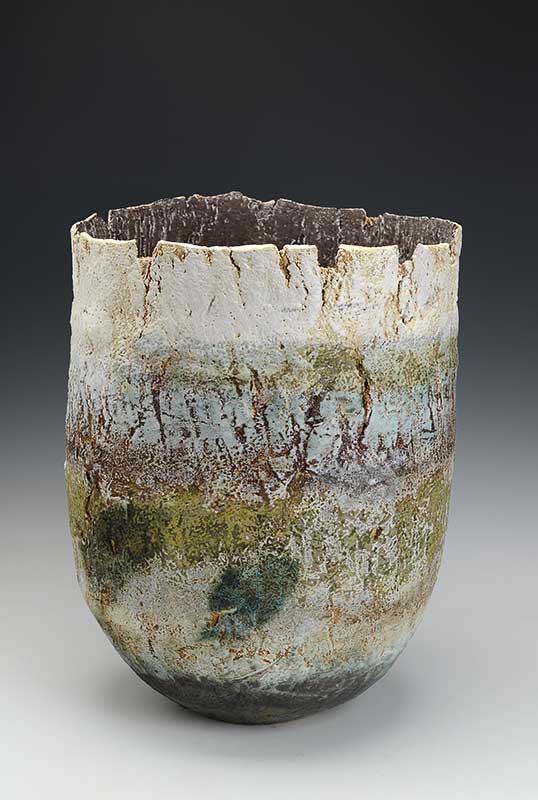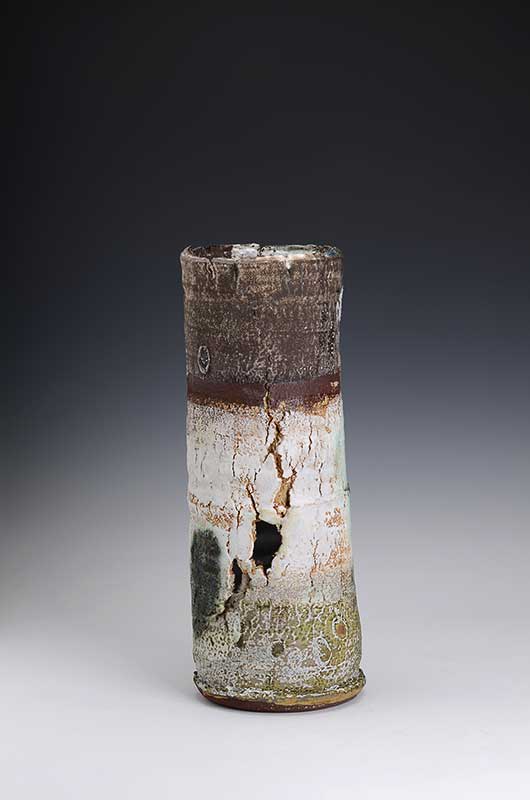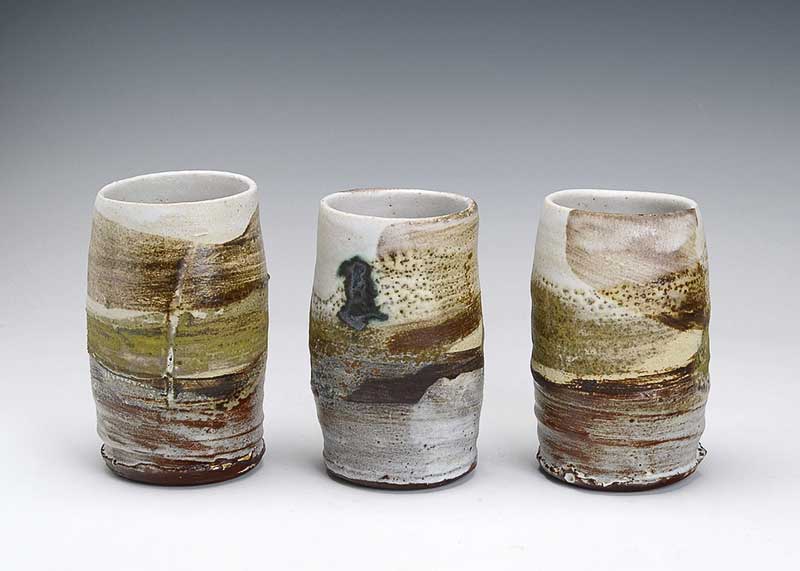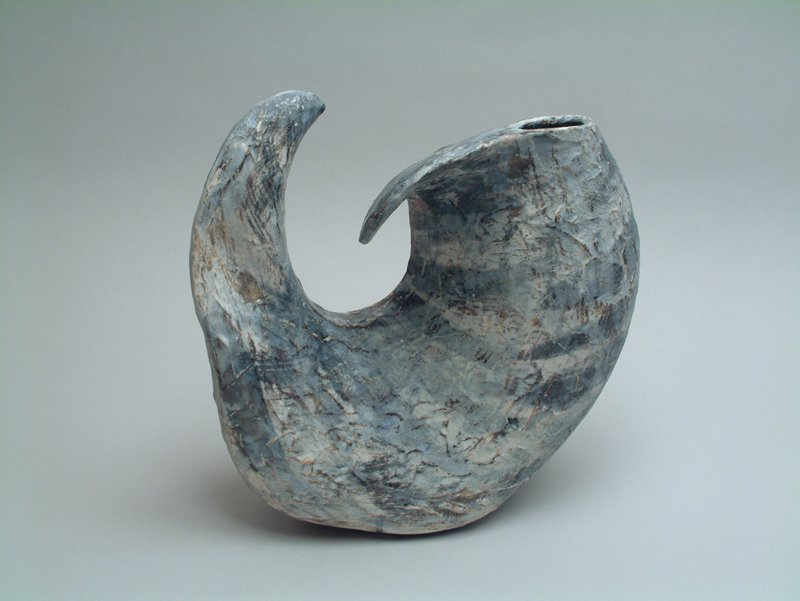CPA Members Profiles – W
For a complete list of Association members, please see our Member Listing web page.
Drawing inspiration from the concepts of geological formation, erosion and the transformational nature of time she searches for the most intriguing sense of balance and contrast, strength and fragility, creating hand-built vessels and forms with undulating edges, fault lines and fissures.
I mix my own clay and make my own glazes.
My work is thrown and fired to stoneware temperatures. When glazing, the first marks that I make are usually with the black and all that follows is a response to that black.
Thrown or slab made, slip decorated on dark clay, reduction fired stoneware Clare works with porcelain to create ebbtide seascape vessels and sea pods from the deep. Her work has evolved over thirty years of experimenting and pushing the boundaries with ideas and techniques. She draws from the seas inexhaustible supply for inspiration.
Elly graduated from the Royal College of Art in 2004. Since then she has exhibited in numerous galleries and craft fairs. She works in her garden studio in Hertford.
Flatback Figure Series: Recalling traditional Staffordshire mantelpiece ornaments, each of these unique ceramic figures is crafted from casts of contemporary packaging and discarded domestic ephemera, commenting upon our consumerist society. Creamware, press-moulded, individually animated elements bonded at leather hard stage. Traditional Staffordshire glazes.
All the work is made in earthenware and decorated with combinations of paper resist and slip trailing. White slip is poured thinly to let the colour of the body through or used very thickly and applied whilst the pot is rotating on the wheel to give a ‘wrapped’ look. At present I am using the paper to mask an area to decorate within, which gives a greater flexibility for variation and experimentation.
I also decorate with coloured glazes, again both thinly but with detail in thick, rather like applying watercolour, moving from light to dark. Recent work has been based on leaf motifs, vegetables and images of fruits, looking at the way fat pears ‘sit’ or oval lemons ‘lie’.
Sarah Walton has worked as a potter for 40 years. Through this time she has moved from being a maker of hand thrown tableware to being a hand builder. Throughout she has used stoneware clays that she has fired in a reducing salt kiln to 1280c.
Bone china is a very seductive material to work with, possessing qualities of intense whiteness, translucency and strength. It is a very ‘single-minded’ clay, which forces the maker to work with clarity and precision. Its technical inflexibility and idiosyncratic making and firing characteristics might easily be a deterrent to investigation, however I consider these restrictions and limitations a challenge to creativity and working methods.
James and Tilla met each other during their apprenticeships to the potter Rupert Spira in the late nineties. In 2002 they set up their workshop in rural Carmarthenshire where they live with their three daughters.
I engage with the relationship between nature and culture through the glazed surface and form of coil-built vessels. The vessel is a great symbol of civilisation and echoes the man-made and structural environment in which we live. In contrast to this, naturally occurring textures found within urban and rural environments perpetually interact and alter this order. Such textures can be rendered through layered volatile and blistering glazes. The tension between the man-made form and natural [glaze] phenomena in my work, brings into focus the nature of our materiality and fragility. Annette Welch’s current collection of wheel-thrown, stoneware ceramics include large platters, tall vases, lidded forms and pod jars, which can be handled, used and displayed in domestic settings.
The work plays with contrasts – shadow and light, detail and restraint, coarse and smooth. Visual and tactile qualities vary from elemental, scarred, raw-earth warmth to a light, smooth and subtle clarity. My work is thrown in porcelain and slip decorated producing textural accents inspired by repeated patterns found in the natural world. Nature also influences my choice of colour palette, with glazes in soft greens, blues and yellows.
I work in porcelain as I love its translucent quality, its delicate nature and for the soft colours that can be achieved.
I am drawn to making pieces that are functional often thinking about its use before designing the piece. I like a handle that is comfortable to use and a bowl that feels good in your hands. After many years of making decorative Raku I decided it was time to look afresh at what I was making and attempt to incorporate into it elements of the ceramic history I am interested in.
These hand-built ceramic pieces focus on surface decoration, collage and juxtaposition; where the vessel is a starting point for exploration of shape, and an interest in the sense of repair and assemblage has informed my method of construction over several years.
The shapes in the collection continue to evolve, building on what came before and reaching for a pleasing sense of aesthetic and balance.
As a child I loved drawing and messing about with clay in the garden. At the age of 15 I encountered the head of my local art-school and in a blinding revelation, realised that ‘art’ could be a job! I studied in Swindon & then Bath, my experience culminating in a 1st class degree in ceramics and 3d design. Whilst at Art School I met my future wife and fellow potter Sarah Monk and in 1994 we moved to Herefordshire and founded Eastnor Pottery – our creative space and teaching studio.
My current work comprises of mainly bowls, vessels, and lidded forms. I aim to produce pieces of work that are precise and detailed and have strong profiles, which are technically sound and possess a clear design element to them. I employ a pragmatic and considered approach rather than one which is random and spontaneous . Richard Wilson was born and brought up in Norwich, and has been making pots since the early 1970s. After studying for two years at Great Yarmouth College of Art, he worked from 1974 to 1980 at Le Dieu Pottery in Norwich before spending 3 years in Australia and New Zealand, and a further five in Germany, working with many potters using different techniques, in particular woodfired saltglazes.
Two years ago I started working with Parian clay and slip, inspired by the work of Minton and Copeland. I like to research a theme and then produce vessels with a unique stories. My latest collection is KÖEN (japanese garden) and is inspired by my travels in Japan.
Each piece I make is a journey which encompasses an appreciation of chance and explores the balance between colour, line and form. Inspired by the interplay of the organic and the geometric,the pieces emerge from processes which are heavily influenced by my previous work as a graphic
designer. The qualities of material, techniques and even some tools have come with me into working
in clay. The precision I learned when creating artwork on a drawing board combined with the
organic nature of clay is the basis of the way I work in clay today.
Slab built white earthenware vessels and wallpieces decorated with textural abstract drawing, using slips and glazes. Fired to 1140 centigrade in an electric kiln. Some pieces then have a minimal and controlled smoke firing.
A change of perspective can make life more enjoyable and abundant. I make my pots using a combination of techniques - throwing, pinching and coiling.
Moving to rural Somerset has given me an opportunity to enjoy and respond to the landscape that surrounds my studio.
Kate Windibank
The heat work of the kiln is integral to Kate’s work. In the intense heat, oxides and glaze react and flow, creating movement and texture that remains permanently captured on the surface of the vessel.
Once complete Windibank's work still shows its transformational journey, these are objects that can be investigated and reappraised, as each viewing reveals new juxtapositions of detail, process, form and event.
The process begins when clay is torn then pressed into spherical moulds. The tearing and joining of the clay creates natural fault lines along which the clay can be broken into shards which I use to create my fragmented vessels. As the pieces are constructed oxide enriched slips are embedded into the crevasses and surface of the clay, the work is then fired to a high bisque to give strength to the delicate structures. It is then glazed and fired to cone 8/9, with a cooling ramp to encourage the formation of devitrified crystals on the surface of the glaze. During firing the oxides are drawn out, reacting with the glaze to create colour and texture that remains permanently frozen on the surface of the vessel. The finished pieces retain traces of the original spherical surface, a reminder that they are fragments of something larger and more complete.Carol Wainwright - Selected member
I use both brush and hand cut stencil and I don't know how the image will ultimately work. Pattern, colour, surface texture, all contribute to the final picture.
My workshop is in Yorkshire, close to YorkMotoko Wakana - Selected member
Clare Wakefield - Selected member
Pieces capture the effects of constant change on the environment. Smooth, eroded chalk rock pools, the constant flow of the sea and rocks hewn through to reveal inner striations of sediment and emerging life forms can all be interpreted in her work.
Her addiction to all year round sea swimming inspires a feel for fluidity with euphoric storm winds whipping up big rolling, icy swells to flat calm waters reminiscent of Mediterranean summers.
Working with Audrey Blackman porcelain, vessels are thrown, pierced and sculpted, sea pods are hand built, pierced and sculpted. Glazes are silk white, subtle greens and vibrant blues which are sprayed, painted or poured; often all three methods are used on one piece. In an electric kiln, work is bisque fired to around 1000c and glaze fired to around 1240c.
Clare’s workshop can be found on the South East coast and visitors are welcome by appointment. Elly Wall - Selected Member
Elly’s work is hand built using slabs of clay with coloured slips and fired in an electric kiln to 1250 degrees.
Textural marks and impressions are also applied during this making process. Repetitive mark making in the
surface of the clay is in itself a meditative aspect to the construction of her work, but also brings to mind the
mechanical nature of repeated processes employed in industry, piercing, riveting, stamping.
Her work is informed by disused industrial buildings, and the sense of unease created by large volumes of empty space.
?“The vastness of contained empty spaces absolutely terrify me but I also find them compelling, I try to explore this
feeling within my work. The physical and historical layers within these derelict spaces expose and reveal details in
their construction transforming them into fascinating and eerily beautiful empty vessels."Rose Wallace - Selected member
Rose Wallace has lived in Oxford for over forty years. She has been involved in ceramics since 1998 graduating with a first class B.A. from B.C.U.C in 2008. Rose was selected for professional membership of The Craft Potters’ Association in 2010. Since 2017 she has been employed as a pottery tutor for Abingdon & Witney College. Rose works from her Florence Park Studio in Oxford. Commissions and visitors welcome by appointment.
Ceramic works selected for the permanent collections of The Grimmerhus Museum, Denmark, The International Ceramic Research Centre, Denmark, The Ken Stradling Study Collection, Bristol and Cannon Hall Museum, Barnsley.Josie Walter - CPA Fellow
Most of the work is thrown on a momentum wheel, which I made at Chesterfield College, in the 1970s. I enjoy the relaxed rhythm and the quietness of the flywheel as it is the only way to hear Radio 4 without interference! The wheel is built to exactly accommodate my frame and is therefore extremely comfortable. The work is raw glazed and fired to Cone 03 in an electric kiln.
All the pots I make are functional and are made to be used in the kitchen or for serving on the table. The decorative motifs are used to complement the food cooked and served in them and provide a pot that is pleasing to the eye when not in use.
Sarah Walton - CPA Fellow
She is known for her birdbaths that stand on oak bases. She continues production of these while alongside developing large abstract ceramic sculpture that she hopes to make in brick clays. At the same time she is also starting to produce a range of birdbaths in cast iron.
She has a constantly changing display of her work set out in a woodland setting beside her workshop in Sussex.
Visitors are welcome to view this work.Sasha Wardell - CPA Fellow
My particular interests lie in the translucent properties of this material and the differing degrees of luminosity and colour response possible.
And so, I have adapted the industrial techniques, normally associated with the traditional bone china production of mould making and slip casting, to suit the studio environment whilst keeping these time-honoured skills alive.James and Tilla Waters - CPA Fellows
They both have degrees in Painting (James from The Slade and Tilla from Bath) and value that background for the greater understanding of form, colour and materials it has given them in making pots.
They believe passionately in the importance of functionality; merely being hand-made is not enough but when an object is well made and a joy to use it can become a cherished possession and make an enriching contribution to daily life.
Their working roles are many and complex but in summary, James makes and Tilla designs.
They won the Wesley-Barrell Craft Awards (Vessels for Interiors) in 2011 and The Homes and Gardens Design Awards (Ceramics and Glass) in 2013.
Their work is sold across the UK, and from their website.
Paul Wearing - Selected member
The vessels are formed first by press-moulding the base. I then coil the walls; a slower technique allowing me constant flexibility and control.
My treatment of the glazed surface renders evidence of brush marks and chemical reactions. The surface is built up and transformed through layers of brushed slips and glazes. In places, layer upon layer can simultaneously build and crumble, in others, the glaze is barely present, leaving just a trace. The process begins to reveal its own language, determined in part, by chance. Once applied, the materials are set to react within the conditions of the firing process. I fire an electric kiln to around 1230 degrees centigrade. Glazing and firing processes are repeated until the optimum depth and complexity of surface appears. Annette Welch - Selected Member
Sarah Went - Selected member
John Wheeldon - CPA Fellow
Referencing the forms and techniques of eighteenth century Creamware and using fresh, modern colours, my new work is a contemporary take on traditional 18thC tableware.
I am throwing the pots, using press-moulds for spouts, roulettes for decoration and extrusions for handles. Firing is to 1090*C.Emily-Kriste Wilcox - Selected member
Layers of decorating slips are applied in a painterly manner to build up the surface and create a depth that holds similarities to misty skies, or walks across the hills, which in turn allows the vessels to create a sense of place. Often these pieces can evoke memories of a walk or a view across the sea adding to the notion of interpreting landscape.
And so, each piece is an interpretation of an earlier impression or experience. A painting in clay.Jon Williams - Selected member
As well as working with groups and individuals at Eastnor, I travel the West Midlands and beyond working in educational and community settings – early years a specialty.
I use the potter’s wheel daily in both my social engagement and personal work. My one of ceramics and clay interventions have been exhibited extensively in the U.K and abroad.Graham Williamson - Selected member
I hope to create work which is very much contemporary, and which is less rooted in tradition.
Areas of colour and glaze are orchestrated on the forms to add to the overall sense of colour and composition that I wish to promote. Glazes and slips are applied in layers by spraying and brushing and sometimes pieces are refired to achieve the desired result . I use a porcelain body which is fired in an oxidised atmosphere to 1260 centigrade.
Having spent many years of my working life as a glaze technician I have an intrinsic curiosity about glaze and surface and this is something which remains with me today. I retired in 2009 and moved to Gloucestershire and established a purpose built workshop where I now make full time.Richard Wilson - Selected member
Whilst in Germany, Richard spent some time with potters whose work drew from Eastern European designs, and has himself been especially inspired by Hungarian and Romanian slipware from the 1800s. He has also been strongly influenced by the Cardew tradition of English country pottery, having spent some months working at Wenford Bridge in the 1980s, learning about the strengths and subtleties of Cardew's work.
Recently his work has explored colour and abstract patterns in strong forms that capture the ebb and flow of the sea and the landscape of South West Dorset.
As a member of several pottery associations including Professional Member of the Craft Potters Association and ex chairman of the West Country Potters Association, he has been selected over the years for many ceramic fairs here in England and in Europe.
Richard's work is sold in many galleries in the UK from Scotland to Cornwall and also the Caribbean.Kim Witcher - Selected member
I like to slip cast the main Parian vessel, then decorate with clay sprigs. The models for the sprigs are designed in a 3d program and printed in resin on a 3d printer. I then make silicone moulds to press the clay into. I bisque fire, wash and refine, then fire to cone 6.Maria Wojdat - Selected member
Thinking of the vessel as an abstract object I use colour to segment and define the form, the outside
surface, the rim, the inside, sometimes cutting across the surfaces to follow ephemeral lines created
by light and shade. The wall pieces have developed as an abstract shifting of the lines, planes and
colours found in the vessel forms, they have been re-arranged and composed to create new forms in
a different dimension.
Techniques: handbuilding and casting
Materials: Scarva earthstone and engobesTessa Wolfe Murray - Selected member
I am based in Hove East Sussex, by the sea. My workshop and display studio are in my home. Yusun Won - Selected member
Vessels, for me, symbolize ordinary life. I explore vessels from various perspectives and aim to create artworks
that take time to unfold. I make some visual gaps that lead viewers to look at my work closely. The gaps are a space within my work or the layers of two different clay. Sometimes, I make my work seemingly unbalanced or extremely thin, which causes a short pause in perception. My work crosses a boundary between a daily object and an art object in the changing perception of the work.Rachel Wood - Selected member
I use stoneware clay, assortment of slips and glazes, electric fired to 1260 degrees.
Featured here are a sculptural thrown and assembled Bark vessel; pinched and coiled conical bowl; pinched and coiled tall bottle.Gill Wright - Selected member
The forms and textures around me feed my passion for the tactile qualities of clay and allow me to play, creating forms responding to the landscape.
This, with life drawing has given me the chance to explore textures, slips and glazes in a new direction of my work.
I use stoneware and porcelain clay, texturing the surfaces and use slips and underglaze colours to decorate and high fire the pieces in an electric kiln.
Website under construction.

